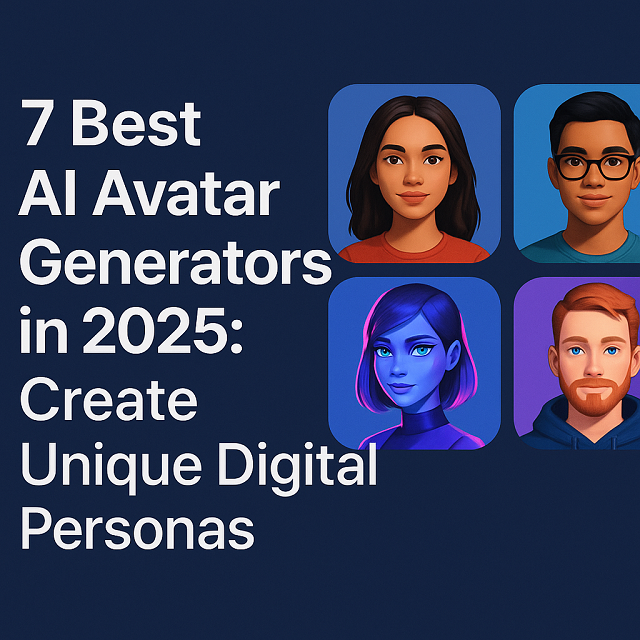
by Polina Yan
AI avatars have moved far beyond cartoon filters and novelty apps. In 2025, they’re redefining how we present ourselves online — from personalized content on social media to branded spokespeople in marketing videos. Whether you’re an individual creator or part of a business team, a high-quality AI-generated avatar can act as your always-ready digital twin.
An AI avatar generator uses artificial intelligence to create lifelike representations of people — animated, still, or even interactive — based on photos, prompts, or style presets. And the quality? Better than ever. Advances in AI and visual processing have made it easier to generate avatars that feel expressive, realistic, and customizable.
The shift from simple filters to full-fledged digital selves isn’t just a visual upgrade. Analysts who study online identity point out that AI avatars are quickly becoming part of how people actually exist in virtual spaces.
“AI avatars are not just futuristic novelties—they are quickly becoming foundational elements of online identity in the metaverse and beyond.”
— Evelyne Hoffman, WINSS Solutions
This aligns with what we see in 2025: when you choose an AI avatar generator, you’re not just picking a fun effect. You’re choosing the engine behind your digital presence across social media, games, virtual meetings, and future metaverse platforms.
In this guide, we’ll help you find the best AI avatar generator for your needs — whether you’re looking for free tools, mobile apps, or advanced solutions that create avatars from scratch. Let’s dive into the tools shaping digital identity in 2025.
Top 7 AI Avatar Generators in 2025
| Tool | Best For | Strengths | Limitations |
|---|
| Synthesia | Professional video avatars | Talking avatars, multilingual voice, business-ready | Paid-only features, limited styling |
| MagicShot AI | Social media visuals | Huge style variety, easy to use | No video/animation, photo quality dependent |
| Fotor AI Avatar | Influencers & coaches | Beginner-friendly, solid headshots | Static images only |
| Picsart AI Avatar | Gen Z & casual creators | Fast, vibrant, mobile-first | Limited realism, subscription for full use |
| Ready Player Me | Gaming & VR | 3D full-body avatars, engine integration | Technical setup, fewer 2D options |
| Reface App | Viral animated content | Fun, animated avatars, free/low-cost | Not high-res, privacy concerns |
| Lensa AI | Artistic personal branding | Painterly, fantasy & Instagram-ready | Style packs can be pricey |
How We Chose These Generators

Selecting the best AI avatar generators is less about exceptionally high-quality graphics. From numerous dozen tools released annually, we focused on those aspects of highest value to users — whether you’re developing content to post to Instagram, making character assets to integrate into your game, or building a virtual representative of your business.
First and foremost, realism was at issue — just how realistic the avatars look and move. An advanced digital character needs to be immersive and never off-putting nor robotic. Other than that, diversity mattered. We wanted to have software where users can create avatars with different styles, body types, and moods.
Usability was paramount as well. Some websites don’t require any design experience at all, and others need you to have some level of technical know-how. We considered both options.
We balanced free versus paid features — not just what’s free, but whether or not paid tiers are worth it.
Finally, we looked at output quality. Does the generator produce still images, animated avatars, or video-ready content? Can the files be used across social media, YouTube, game engines, or enterprise platforms?
From creators to marketers to indie game devs — these tools have use far beyond novelty. So we picked solutions that truly deliver.
Top 7 AI Avatar Generators in 2025
Not all AI avatar tools are built the same. Some focus on hyper-realistic video avatars for business, others on stylized portraits for social media. Whether you want to make an AI avatar for your Twitch profile, marketing campaign, or personal brand, there’s a tool out there tailored to your needs.
We’ve tested and compared dozens of popular platforms and narrowed it down to seven that really stand out in 2025 — based on realism, features, ease of use, and the kind of content you can create. From polished video presenters to artsy cartoon styles, here’s our take on the best of the best.
Synthesia

If your goal is to create video avatars that actually talk — not just static profile pics — Synthesia is a strong contender. Originally built for corporate training and explainer videos, it’s now used by marketers, educators, and small business owners who want to replace on-camera filming with smart, polished AI presenters.
The process is simple: choose an avatar, type your script, and let the system turn it into a video with realistic lip-syncing. You can also clone your own voice and use your own avatar if you’re on a higher plan.
That straightforward workflow is exactly why tools like Synthesia became popular with training and marketing teams. Even the company’s own product messaging emphasizes how far AI avatars have come as a replacement for traditional video production.
“Produce studio-quality videos with AI avatars and voiceovers in 140+ languages. It’s as easy as making a slide deck.”
— Synthesia
This quote reinforces the use case you describe: Synthesia isn’t about fun profile pics — it’s about scalable, multilingual, business-ready video. In your review, it underlines why you put Synthesia at the “professional video avatar” end of the spectrum, compared to more casual selfie-style generators later in the article.
Strengths
- High-quality avatars with natural motion and expression
- Multilingual voice support
- Ideal for explainer videos, training content, and branded video messaging
Limitations
- Not great for casual users or creative expression — very business-focused
- Requires a paid plan for most features
- Limited customization of avatar appearance in lower tiers
Synthesia isn’t the best AI avatar app for selfies or fun — but it’s excellent if you need professional, video-ready avatars at scale. Think: onboarding videos, product walkthroughs, or educational content where you want a consistent, polished look.
MagicShot AI
MagicShot AI is built for people who want to create multiple versions of themselves — not just one perfect selfie. It’s especially popular with social media users, digital creators, and professionals looking to generate a wide range of stylized portraits for content and branding.
Upload a few photos, choose your styles, and the platform spits out dozens of unique AI-generated avatars: cartoon, cyberpunk, watercolor, anime, fashion editorial — you name it. It’s easy to use, and most results look polished enough to use as profile pictures, thumbnails, or promo visuals.
Strengths
- Huge variety of artistic styles
- Simple interface with no learning curve
- Great for creating eye-catching content fast
Limitations
- Mostly image-based — no video or animation support
- Not suited for professional business use (e.g., training videos)
- Best results require high-quality photo input
If you’re looking for the best AI avatar creator to experiment with different aesthetics or update your personal brand visuals, MagicShot AI is a fun, flexible option.
Fotor AI Avatar Generator
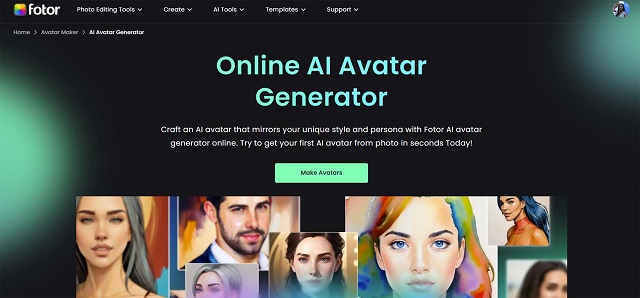
Fotor has been around as a photo editor for years, but its AI avatar generator has become a standout feature in 2025. It’s a great choice for anyone who wants quick, creative avatars without diving into complex tools or pricey subscriptions.
The Fotor AI Avatar Generator lets you generate dozens of avatars by uploading a few selfies — similar to Lensa or MagicShot — but with smoother output and better color harmony. It leans toward polished, semi-realistic styles with just enough flair to make your avatars pop on social media or websites.
Strengths
- Accessible to beginners
- Reliable output even with average-quality photos
- Includes editing tools to tweak results
Limitations
- Mostly focused on headshots
- Limited to static images
- Some features hidden behind a paywall
If you’re searching for the fotor AI avatar generator that balances speed, quality, and ease of use, this is an easy one to recommend — especially for influencers, coaches, and creators.
Picsart AI Avatar
If you’re already familiar with Picsart as a creative editing app, you’ll be glad to know its AI avatar generator online tool is just as intuitive. It’s geared toward casual creators, Gen Z users, and anyone who wants a personalized digital look for their socials without spending hours tweaking settings.
Upload a handful of selfies, and you’ll get back stylized avatar sets in various aesthetics — futuristic, dreamy, gritty, cartoonish. The avatars are clearly AI-generated, but that’s part of the appeal: they’re bold, vibrant, and perfect for platforms like TikTok, Instagram, or Discord.
Strengths
- Mobile-first, quick, and fun to use
- Great for personal branding and content creation
- Integrated with Picsart’s broader editing tools
Limitations
- Limited realism — not great for business use
- Subscription needed for full access
- May repeat certain looks if you don’t upload diverse photos
As an AI avatar generator online, Picsart hits the sweet spot for users who value speed, color, and content-ready visuals over ultra-precise realism.
Ready Player Me

Ready Player Me takes avatars into the world of 3D. If you’re building a virtual world, VR experience, or game — or just want a fully rigged 3D version of yourself — this is hands-down the best avatar generator in that space.
It’s especially popular among developers and game designers because of its wide compatibility with Unity, Unreal Engine, and WebXR. You start by uploading a selfie, and the platform creates a full-body avatar you can customize in style, outfit, and movement. It’s also used in virtual meetings, social VR platforms, and metaverse-style apps.
Strengths
- Generates ready-to-use 3D avatars
- Integrates well with development pipelines
- Ideal for gaming, VR, and interactive platforms
Limitations
- More technical than image-based avatar apps
- Requires understanding of game engines for full use
- Limited options if you’re looking for stylized 2D content
If you’re building for Web3, gaming, or immersive tech, this may be the best avatar generator for bringing your virtual self to life in real-time environments.
Reface App
Reface made a name for itself with real-time face-swapping and viral deepfake content, but its newer avatar tools have given it a fresh edge in 2025. If you’re after quick, animated, personality-filled avatars for memes, messages, or fun promos, this might be the best free AI avatar generator for you.
The app lets you create animated avatars that lip-sync, emote, and mimic expressions. It’s not meant for polished professional output — but that’s exactly why it works so well on platforms like TikTok, Snapchat, and Reels. It’s fast, weirdly accurate, and way more engaging than a still image.
Strengths
- Totally mobile, built for viral content
- Includes animated avatars and motion-based templates
- Many features are free or low-cost
Limitations
- Not business-oriented
- Output isn’t high-res enough for large-scale media use
- Data/privacy concerns with some users
If you’re focused on fun, humor, or storytelling, this is one of the best ways to experiment without spending a dime. For sheer personality, it’s a standout among the best free AI avatar generator options.
Lensa AI (by Prisma Labs)

Lensa exploded in popularity for its dreamy, highly stylized portraits — and its best AI avatar maker features in 2025 continue to deliver. It’s designed for people who want something more aesthetic than realistic: think painterly effects, fantasy themes, and Instagram-worthy images.
Upload 10–20 photos, choose a style pack, and get back dozens of variations. Some look cinematic, some lean into anime or fantasy, and others have that bold digital art vibe that works great for personal branding or content aesthetics.
Strengths
- High-quality, artistic results
- Super easy to use with a sleek mobile interface
- Beautiful filters and visual themes
Limitations
- No animation or video options
- Style packs can get expensive
- Output sometimes over-processes faces
As a best AI avatar maker, Lensa isn’t built for corporate needs — but it’s perfect if you want avatars that feel more like art than identity. Creators, freelancers, and influencers will find a lot to love here.
Custom-Built AI Avatar Generators: Scrile AI as Your Development Partner

Choosing the best AI avatar generator is great if you’re creating content for fun or personal branding. But what if your goal is bigger — launching your own product, offering avatar features in your app, or building something truly custom that no one else has? That’s where Scrile AI becomes more than just a name — it becomes your technical partner.
Scrile AI is not a tool, template, or marketplace. It’s a custom software development service that helps startups, businesses, and creators build their own AI avatar generator from scratch — fully tailored to their goals, user experience, and branding. You bring the idea. Scrile brings the engineering, AI models, and product infrastructure to make it real.
Custom-built avatar systems make the most sense when you zoom out and look at the business potential. Virtual influencers and human-like digital personas are no longer a niche experiment — they’re a fast-growing global market.
“The global virtual influencer market size was estimated at USD 6.06 billion in 2024 and is projected to reach USD 45.88 billion by 2030.”
— Grand View Research
For founders and teams who want to launch their own avatar-based product, numbers like this validate the idea of investing in a custom AI avatar generator. Scrile AI fits into that picture as the technical partner that turns those market opportunities into an owned platform instead of just another account on someone else’s SaaS.
Their team can build advanced functionality, including:
- AI-powered face generation and photo-to-avatar transformation
- Model training for custom styles, voice, animation, and emotional expression
- Support for real-time video avatars, screen recording, and voiceovers
- Workflow integration with messaging, content publishing, and user accounts
- Custom dashboards for managing avatars, user data, and moderation
Most tools on the market force you into their limitations. With Scrile AI, you build your own product — not rent space in someone else’s. That means full ownership of your technology, your data, and your brand. No subscription traps. No API rate limits. No licensing headaches.
Want your avatars to look, sound, and move the way you envision? Want to sell avatar-based content directly to your users? Scrile builds that for you — tailored to your market and tech stack.
If you’re ready to move from user to creator, and from idea to product — get in touch with Scrile AI. Your custom avatar solution starts with one smart conversation.
Off-the-Shelf Avatar Tools vs. Scrile AI (Custom Build)
| Option | Ownership & Branding | Capabilities | Monetization | Best Fit |
|---|
| Pre-Built Generators (Synthesia, Lensa, etc.) | Limited control | Fixed styles & features | None | Individual users & creators |
| Scrile AI (Custom Solution) | Full ownership & branding | Custom avatars, animation, voice, integration | Subscriptions, tipping, content sales | Businesses & platforms |
Conclusion
AI avatar generators have come a long way — from novelty filters to powerful tools used across marketing, gaming, education, and content creation. The options available in 2025 are more diverse, realistic, and customizable than ever. Whether you’re looking to boost your personal brand, add some personality to your social presence, or automate your company’s video content, there’s a best AI avatar generator out there for you.
If your goals go beyond using what already exists — if you want to build your own solution, control the user experience, and scale on your terms — Scrile AI is the partner you need. Their team helps businesses and creators develop custom avatar software with full ownership and flexibility baked in from the start.
Ready to take that next step? Reach out to Scrile and turn your vision into a tailored AI avatar platform that stands out from the crowd.
Polina Yan is a Technical Writer and Product Marketing Manager, specializing in helping creators launch personalized content monetization platforms. With over five years of experience writing and promoting content, Polina covers topics such as content monetization, social media strategies, digital marketing, and online business in adult industry. Her work empowers online entrepreneurs and creators to navigate the digital world with confidence and achieve their goals.

by Polina Yan
Voice recognition is no longer a future technology but now a mainstream tool in everything from healthcare and customer service to smart assistants and accessibility and automation systems. It is becoming part of everything from apps and messaging to virtual personal assistants and smart devices in the home.
One of the prime movers towards accomplishing this revolution is the swift evolution in artificial intelligence (AI) and natural language processing (NLP). Speech recognition Python-based solutions fueled by AI have evolved immensely in precision to enable real-time transcriptions, voice command recognition, and multilingual recognition.These technologies are making interactions faster and more efficient, whether it’s for virtual assistants like Siri and Alexa, medical transcription services, or automated customer support systems.
Why Python Speech Recognition?
Among the many programming languages used for voice recognition, Python speech recognition stands out as the top choice for developers. Python’s ecosystem offers several powerful libraries that allow developers to integrate speech-to-text functionalities into applications with minimal effort. Its extensive open-source community and machine learning frameworks make it the go-to language for AI-driven projects.
Here’s why Python is widely used for speech recognition:
- Rich library support – Python offers multiple dedicated speech recognition libraries, such as SpeechRecognition, DeepSpeech, and Vosk, that simplify the integration process.
- Ease and usability – Its programming syntax readability allows one to develop complex voice-based AI systems with much ease and flexibility in use
- Robust machine learning and AI features – Python has direct integration with machine learning and deep learning platforms like TensorFlow and PyTorch to enable organizations to construct highly precise, custom-built speech recognition models.
- Cross-platform compatibility – Such systems work across multiple operating systems, ensuring scalability for web, mobile, and embedded applications.
How Speech Recognition Works in Python

Speech recognition enables machines to understand and process spoken language, converting it into readable text or commands. The tech can also provide voice assistants, in-home devices, automated transcription tools, and voice-free systems. Such systems can be developed in a less complicated way through developments in Python speech recognition and with the aid of sophisticated AI-based tools.
Human speech recognition includes both linguistic processing and machine learning models being used correctly in a very complicated process.
At its core, speech recognition isn’t magic — it’s about turning complex sound patterns into understandable language using advanced models. Modern systems often rely on neural networks and deep learning to improve accuracy far beyond simple dictionary matching.
“Whisper is a machine learning model for speech recognition… capable of transcribing speech in English and several other languages, and… improved recognition of accents, background noise and jargon compared to previous approaches.”
— OpenAI on Whisper (speech recognition system), Wikipedia
That’s why libraries like Whisper, DeepSpeech, and Vosk form the backbone of Python speech projects — they leverage modern machine learning architectures to decode human speech in ways older systems could not.
Key Components of Speech Recognition Python Applications
- Acoustic Modeling. Speech consists of phonemes, which are the fundamental units of sound. The AI systems identify these sounds and match them to their corresponding letters or syllables. Acoustic models enable the recognition of words that sound alike and handle the variations in pronunciation.
- Language modeling. The system then has to organize words and sentences in a coherent order after sensing phonemes. Prediction models enhance recognition by predicting words that most likely follow in a sentence in largely the same manner that autocorrect or predictive input works in cell phones.
- Noise Filtering & Audio Processing. Recognition of speech is not only about recognizing words—participating words must be filtered from ambient noise and sound. Most speech recognition Python libraries come with noise cancellation to enhance the performance in real scenarios, i.e., in the office, in a crowd, or in the context of in-car free hand conditions.
Neural Network Processing. They have the latest speech recognition systems using AI and deep models to improve accuracy levels. Advanced deep models and AI assist the systems in identifying patterns in enormous amounts of spoken data to adapt to accents and dialects and patterns changing with time.
Top Python Speech Recognition Libraries in 2025
Python offers a variety of powerful speech recognition libraries, each suited for different use cases. Whether you need a lightweight API-based tool, an offline speech recognition system, or an advanced deep learning model, there’s a solution available. Below is a comparison of the five best speech recognition Python tools in 2025, covering their strengths, weaknesses, and ideal use cases.
Comparison of Top Python Speech Recognition Libraries
| Library | Type | Strengths | Weaknesses | Best For |
|---|
| SpeechRecognition | Wrapper for multiple APIs | Easy to use, lightweight, flexible, supports Google/IBM/Microsoft | Internet dependent, weak offline support | Quick integration, basic transcription |
| Mozilla DeepSpeech | Offline, open-source, TensorFlow-based | High accuracy, customizable, privacy-friendly | Needs GPU/high CPU, large models | Privacy-sensitive apps, custom AI |
| Vosk | Offline, lightweight | Low latency, multilingual, works on embedded devices | Limited pre-trained models, requires tuning | IoT, Raspberry Pi, smart devices |
| Google Speech-to-Text API | Cloud-based | Very accurate, real-time streaming, auto-punctuation | Subscription costs, needs internet, latency risk | Enterprises, live transcription, call centers |
| OpenAI Whisper | AI-powered, multilingual | Extremely high accuracy, understands accents & noise, context-aware | Heavy resource use, slower on low hardware | Journalism, podcasts, multilingual assistants |
SpeechRecognition

SpeechRecognition is one of the most widely used Python libraries for speech-to-text conversion. It acts as a wrapper for multiple speech recognition engines, making it easy to integrate with cloud-based and offline services. The library supports APIs like Google Web Speech, CMU Sphinx, IBM Speech to Text, Wit.ai, and Microsoft Azure Speech.
Strengths:
- Easy to implement – Requires minimal setup and works with a simple API call.
- Lightweight – Does not require extensive computational power.
- Flexible – Supports multiple speech engines, allowing developers to choose the best fit.
Weaknesses:
- Internet dependency – Most of its features rely on cloud APIs, requiring an internet connection.
- Limited offline capabilities – The CMU Sphinx engine is available for offline use but lacks accuracy compared to deep learning-based alternatives.
Best Use Cases:
- Quick speech recognition integration into Python applications.
- Developers looking for a simple API to access Google or IBM speech services.
- Basic transcription needs where internet access is available.
Mozilla DeepSpeech
Mozilla DeepSpeech is a deep learning-based, open-source speech recognition system built on TensorFlow. It is trained on thousands of hours of voice data and offers high accuracy, even in challenging conditions. Unlike cloud-based solutions, DeepSpeech runs entirely offline, making it suitable for privacy-sensitive applications.
Strengths:
- Fully offline processing – No internet connection required.
- High accuracy with proper training – Can be fine-tuned with custom voice data.
- Open-source flexibility – Developers can modify and improve models based on their needs.
Weaknesses:
- Requires high computational power – Best suited for systems with GPUs or high-end CPUs.
- Large model size – Can be resource-intensive compared to lightweight libraries like SpeechRecognition.
Best Use Cases:
- Privacy-focused applications that require offline speech recognition.
- AI-driven applications needing accurate speech-to-text conversion.
- Developers looking to fine-tune a speech model for a specific use case.
Vosk
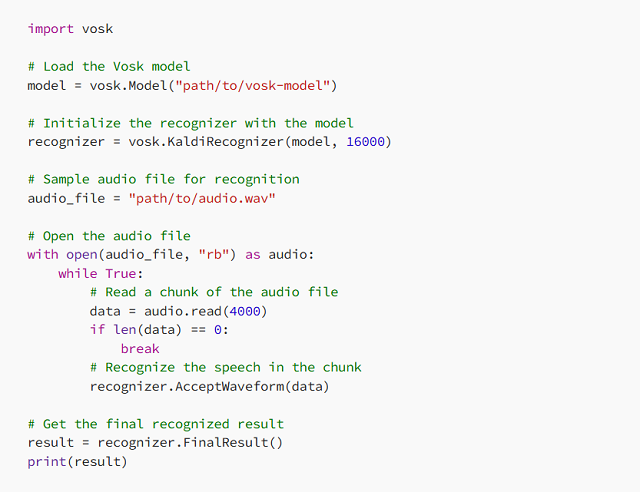
Vosk is a lightweight, offline speech recognition Python library designed for low-power devices like Raspberry Pi and embedded systems. It supports multiple languages and provides real-time speech processing with minimal resource consumption.
Strengths:
- No internet dependency – Works completely offline.
- Low latency – Optimized for real-time applications.
- Multilingual support – Recognizes speech in over 20 languages.
Weaknesses:
- Fewer pre-trained models compared to cloud-based APIs.
- Requires additional tuning to improve accuracy for niche applications.
Best Use Cases:
- Embedded systems (Raspberry Pi, IoT applications, smart home devices).
- Developers needing offline speech recognition with minimal hardware requirements.
- Multilingual speech processing for global applications.
Google Speech-to-Text API
Google Speech-to-Text API is a cloud-based speech recognition service that provides highly accurate transcription using Google’s deep learning models. It supports real-time and batch processing, making it suitable for applications requiring fast and scalable speech recognition.
Strengths:
- High accuracy across multiple languages.
- Supports real-time streaming for live applications.
- Includes auto-punctuation and noise cancellation features.
Weaknesses:
- Requires a Google Cloud subscription, which can be expensive for high-volume applications.
- Latency issues may arise in environments with poor internet connectivity.
Best Use Cases:
- Large-scale enterprise applications needing cloud-based transcription.
- Call centers and customer support automation.
- Live streaming applications requiring real-time speech-to-text conversion.
OpenAI Whisper
OpenAI Whisper is an AI-powered speech recognition Python model trained on a massive dataset of multilingual speech. It is designed for high-accuracy transcription, multi-language support, and natural conversation understanding.
Strengths:
- Extremely high accuracy, even with accents and noisy backgrounds.
- Supports multiple languages, making it ideal for global applications.
- AI-driven transcription with improved contextual understanding.
Weaknesses:
- Requires significant processing power for real-time applications.
- Can be resource-intensive compared to lightweight libraries.
Best Use Cases:
- High-accuracy transcription services for podcasts, interviews, and journalism.
- AI-driven voice assistants with multilingual capabilities.
- Businesses needing contextual understanding beyond simple speech-to-text conversion.
Python continues to be a leading choice for developing speech recognition applications due to its extensive library support. Whether you need a simple API-based tool like SpeechRecognition, an offline solution like Vosk, or an advanced AI-powered model like OpenAI Whisper, there is a Python speech recognition library suited for your project.
Choosing between open‑source libraries and cloud‑based speech APIs isn’t just a technical decision — it’s a strategic one. The tradeoffs often come down to control versus convenience.
“Open-source solutions… offer the flexibility to modify the code to meet specific requirements. However, open-source solutions… must be provided and managed by you… Additionally, the accuracy of open-source tools is often inferior to that of cloud-based alternatives…”
— AssemblyAI, “Python Speech Recognition in 2025”
This highlights why many developers start with an API like Google Speech or AssemblyAI for accuracy and then graduate to local, customized systems when they need more control, privacy, or offline capability.
How to Implement Python Speech Recognition in Your Project

Python speech recognition systems have made changing the way that companies automate processes, communicate with users, and process voice data a reality. From virtual assistant-based systems powered by artificial intelligence to voice command and real-time transcription and voice-controlled smart devices, application utilization of speech recognition must be weighed and optimized.
To successfully implement Python speech recognition technology, firms have to select the right library, calibrate processing to realworld specifications and integrate the tool into the process. High accuracy cloud-based APIs are required in some applications while independent and offline models work in others
The secret to an effective speech recognition Python project is finding the ideal balance between accuracy and speed and being in a position to connect well with other systems.
Setting Up a Python Speech Recognition System
Before diving into implementation, it’s important to define what the speech recognition system will be used for. A real-time transcription service requires high-speed processing, whereas an AI chatbot might need natural language understanding in addition to voice-to-text conversion.
Once the use case is clear, the next step is setting up the development environment. This involves installing the necessary Python libraries and configuring the system for optimal performance.
Cloud-Based vs. Offline Speech Recognition
One of the first decisions businesses face when implementing Python speech recognition is whether to use cloud-based or offline speech processing.
Cloud-based services, such as Google Speech-to-Text or OpenAI Whisper, provide high accuracy and continuous improvements because they leverage deep learning models trained on massive datasets. These services are ideal for applications that require real-time, multilingual speech recognition. However, they depend on an internet connection and often come with ongoing usage costs.
Offline models, like DeepSpeech and Vosk, process voice data directly on the device, making them a great choice for privacy-sensitive applications where data security is a concern. These solutions allow businesses to avoid external API costs, but they may require fine-tuning and additional computational resources for training and optimization.
For businesses operating in high-security industries, such as healthcare, finance, and legal services, offline models provide greater control over voice data without relying on third-party providers.
Optimizing Speech Recognition for Accuracy and Performance
The speech recognition model is as good as the quality input it gets. Even the most advanced AI-based systems fail to handle poor quality audio, high levels of background noise, or heavy accents. To have a better recognition percentage, companies need to work on sound optimization and model adjustment from the AI end
Major factors affecting accuracy in speech recognition:
- Audio Quality – High-quality microphones and noise elimination methods enhance speech audibility and produce better transcription accuracy.
- Background noise management – Using sound filtration and noise cancellation techniques enables speech models to tune in to the voice of the speaker
- Speaker Adaptation – Training models to recognize multiple accents and speaking patterns ensures higher accuracy to multiple clusters of users
- Word Choice Within Domain – Training models to a domain-specific lexicon increases awareness to business-specific usage
For multiple language applications, multiple language support will be required. There exist Python speech recognition libraries that natively support multiple languages and those that allow multiple language support through changing between multiple models trained in different languages. Business organizations that have international scope should prefer solutions with robust language processing
Integrating Speech Recognition into Business Applications
Speech recognition technology is now being widely adopted across various industries, providing businesses with new opportunities for automation and customer interaction. The implementation of this technology depends on the specific use case and industry requirements.
depends on the specific use case and industry requirements.
Real-World Business Applications of Python Speech Recognition:
- AI-powered Customer Service – Virtual and AI-powered chatbots utilize speech recognition to comprehend the inquiries of the customers and respond automatically.
- Medical Transcription Services – Physicians would not be depending on speech-to-text systems to auto-document along with note-taking.
- Financial & Legal Transcription – It reduces paperwork in financial reports and legal cases and client conversations
- Hand-Free devices for Smart devices – Devices with IoT such as voice assistant smart home devices and voice command in vehicles use voice recognition to offer hand-free services.
- Live Captioning & Subtitling – Automatic transcription tool helps organizations produce live captions in real-time online conferences, webinars, and live streams.
Each of these use cases requires different levels of accuracy, latency, and language processing capabilities, making it essential to choose the right speech recognition Python solution for the job.
Ensuring Scalability and Security in Speech Recognition Applications
Scalability is a paramount concern for businesses handling vast volumes of voice data. A speech recognition system must be capable of handling thousands of interactions simultaneously without compromising speed or accuracy.
Security is also an important concern, particularly when dealing with sensitive user data. Some industries, such as finance, healthcare, and government, must comply with strict data privacy regulations like GDPR and CCPA.
To ensure compliance, businesses should consider:
- On-premises speech recognition solutions for greater control over data.
- End-to-end encryption for protecting voice interactions.
- AI bias mitigation to prevent inaccuracies based on speaker demographics.
Balancing performance, security, and cost-efficiency is essential for businesses that rely on AI-powered speech recognition for mission-critical applications.
Challenges and Limitations of Speech Recognition
While Python speech recognition has advanced significantly, real-world implementation comes with several challenges that affect accuracy, speed, and user experience. Companies implementing speech-to-text solutions need to overcome technical constraints to support fluent and seamless functioning.
Background noise is one of the biggest issues. In noisy environments like offices, public spaces, and call centers, speech recognition models struggle to distinguish the speaker’s voice from background noises, simultaneous conversations, or echoing acoustics.This leads to continuous misinterpretations, which makes the system less reliable.
Another challenge is dialect and accent recognition. While many speech recognition Python models are trained on standardized datasets, they often fail to accurately process regional accents, fast speech, or non-native pronunciations. This can result in incorrect transcriptions or repeated errors, making the system frustrating for diverse user groups.
Latency is another concern, particularly for real-time speech recognition applications. Systems requiring real-time voice-to-text transformation, such as AI chatbots or live transcription software, need to maintain processing latency as low as possible. High latency can make interactions respond slowly or become unresponsive, affecting user experience in a negative manner.
To overcome these limitations, businesses optimize their speech recognition models using noise reduction filters, AI-powered learning, and continuous model fine-tuning. By adapting speech recognition Python solutions to real-world conditions, companies can significantly improve accuracy and performance.
Scrile AI: The Best Custom Development Service for Python Speech Recognition
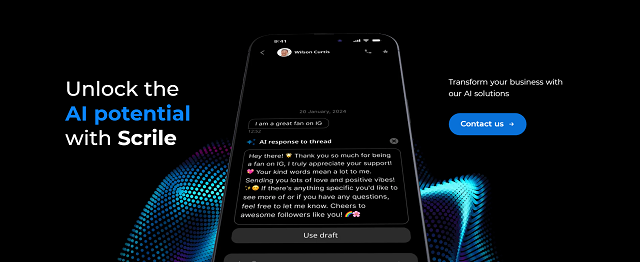
Businesses looking to implement speech recognition Python solutions need more than just an off-the-shelf API—they need a customized, scalable, and efficient system that seamlessly integrates with their existing workflows. Scrile AI offers a tailored approach to speech recognition development, ensuring that businesses get precisely the features, accuracy, and performance they need.
Contrary to typical cloud-based applications limiting personalization and control, Scrile AI provides fully customized speech recognition models, designed for industry-specific use. Customer service automation, medical transcription, legal documentation, or voice-based smart apps, Scrile AI provides cutting-edge AI solutions on the basis of proprietary business requirements.
Why Choose Scrile AI Over Off-the-Shelf Solutions
| Option | Ownership | Customization | Security | Scalability | Integration | Weak Points |
|---|
| Off-the-Shelf APIs (Google, IBM, etc.) | Belongs to provider | Limited, generic models | Provider-dependent compliance | Scales with cost | Easy to plug & play | Vendor lock-in, recurring fees |
| Open-Source Models (Vosk, DeepSpeech, Whisper) | Open community | High, but requires expertise | Depends on implementation | Flexible, but resource heavy | Needs dev effort | Requires AI/ML specialists |
| Scrile AI (Custom Python Development) | Full client ownership | Tailored to industry (medical, legal, finance, support) | GDPR/CCPA compliant, business-grade | Enterprise-level, low-latency, live-ready | Seamless integration into existing apps | None — handled as turnkey by Scrile |
What Scrile AI Offers
Scrile AI specializes in custom-built AI solutions, allowing businesses to leverage advanced Python speech recognition technology while maintaining complete ownership and flexibility over their systems.
- Custom speech recognition models – Tailored for specific industries to give higher accuracy in specialized vocabulary and use cases.
- Seamless integration – Integrates with existing apps, software environments, and backends without problems of compatibility.
- Scalable infrastructure – Designed to process live voice handling with high-speed transcription and low latency.
- Multilingual speech recognition – Supports multiple languages and dialects, making it ideal for global businesses.
Why Choose Scrile AI Over Off-the-Shelf Solutions?
The majority of companies begin with third-party APIs but later discover that pre-existing solutions are significantly limiting. Scrile AI escapes vendor lock-in and platform limitations and offers:
- End-to-end bespoke AI models – No reliance on third-party, and thus companies will fully own their technology.
- Business-class security – GDPR, CCPA, and other data privacy law compliant, hence secure and safe voice data processing.
- Support and scalability – Engineered for businesses who need long-term stability, upkeep, and nurturing for mass scale operations.
For businesses serious about building powerful, AI-driven voice solutions, Scrile AI provides the best Python speech recognition development service available. Explore Scrile AI’s custom AI solutions today and bring advanced speech recognition capabilities to your business.
Conclusion
The landscape of Python speech recognition is evolving rapidly, with numerous libraries that offer advanced features for real-time transcriptions, AI assistants, and voice automation. The choice of the appropriate tool depends on your needs, levels of accuracy, and scalability objectives.
For businesses that require custom solutions, relying on pre-built APIs may not be enough. Scrile AI provides tailored AI development, ensuring full control, security, and seamless integration into any application.
Take the next step—explore Scrile AI today and build a custom AI-powered speech recognition Python system.
Polina Yan is a Technical Writer and Product Marketing Manager, specializing in helping creators launch personalized content monetization platforms. With over five years of experience writing and promoting content, Polina covers topics such as content monetization, social media strategies, digital marketing, and online business in adult industry. Her work empowers online entrepreneurs and creators to navigate the digital world with confidence and achieve their goals.
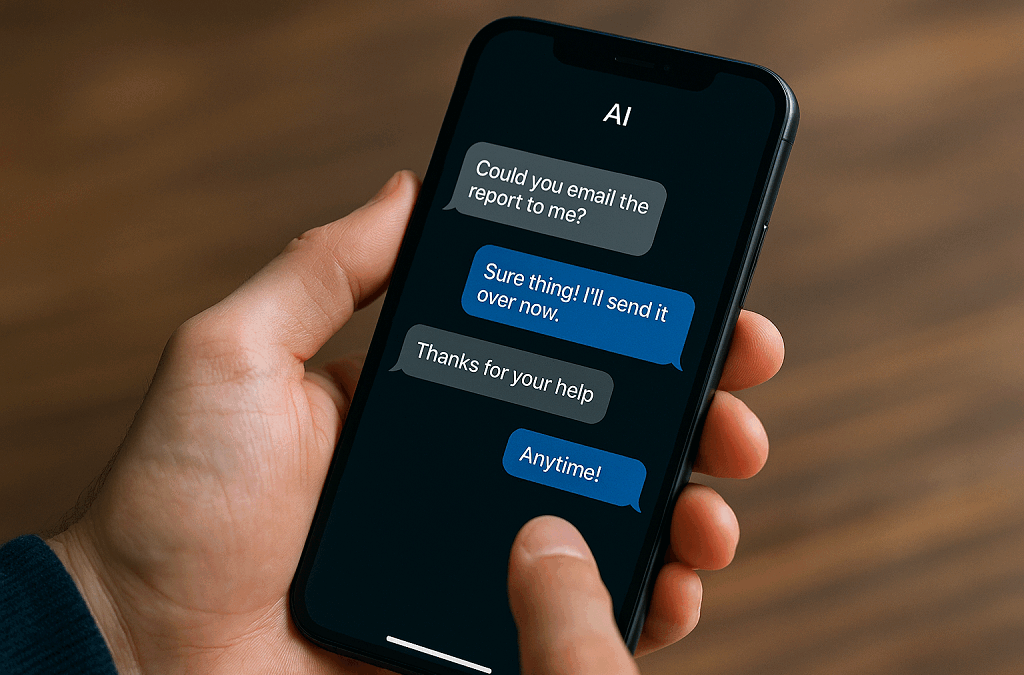
by Polina Yan
You’re juggling five chats, a dozen emails, and three notifications that say “Just following up :)” — all before noon. That’s the chaos most people live in, and it’s exactly why AI respond to text tools have exploded in 2025. People don’t just want help writing. They want smart replies that feel like them, sent in seconds.
Fast isn’t enough anymore. The tone has to be right. The reply has to make sense. And it better not sound like a robot or a broken copy-paste.
That’s where AI comes in — not to flood inboxes with generic messages, but to help you respond like a human, faster than humanly possible.
In this article, we’re looking at five of the best tools on the market. They’re not just clever — they’re useful. They help you reply faster, better, and with less mental load. And if you’re building something bigger? We’ve got something for that, too.
AI Respond to Text — 2025 Quick Comparison
| Tool | Core Use Case | Biggest Strengths | Key Limitations | Integrations / Workflow | Pricing Snapshot* | Best For |
|---|
| Typli.ai | Fast, polished replies for email/DMs | Tone presets; quick edits; good for paste-in → reply | No live chat threads; no native messaging/scheduling | Copy/paste into inboxes; pairs with long-form writing | Freemium; paid unlocks unlimited & advanced | Solo founders, marketers, creators juggling many convos |
| AIFreeBox | One-off, no-login reply generation | 100% free; instant browser use; multiple tones | No memory/history; no integrations; not for ongoing chats | Ad-hoc web usage only | Free | Casual users, micro-biz owners testing styles |
| ChatGPT (custom GPT) | Build a tailored reply assistant | Highly customizable tone & rules; can learn your FAQs | Setup takes time; no native inbox integrations; not realtime by default | Embed via apps/zaps; use inside email/chat as helper | ChatGPT Plus for builder ($) | Creators/consultants/devs needing bespoke behavior |
| Reply.io | Sales outreach & inbound handling at scale | Detects intent; suggests stage-aware replies; CRM sync | Overkill for individuals; B2B focus; not for NSFW/fan DMs | Deep with HubSpot/Salesforce & sequences | Business tiers only | SDR teams, founders running campaigns |
| Jasper AI Chat | Brand-consistent replies & longer responses | Brand Voice memory; pulls from style guides/content | No direct inbox integrations; premium pricing | Content workflows; copy/paste into channels | Premium plans | Brand managers, creators needing consistent tone |
| Scrile AI (custom build) | Your own white-label reply system | Full control: tone, rules, NSFW filters, pay-per-reply, gateways | Requires a custom dev engagement | Integrates with your CRM, payments, apps; owns data | Project-based | Platforms, creators & startups needing branded, monetized chat |
*Indicative only; vendors change tiers often.
Why People Use AI to Respond to Texts Now

Nobody wants to spend their day typing the same sentence twenty different ways. “Thanks for your message!” turns into a full-time job when you’re managing clients, fans, or customers across platforms. That’s the whole point of using AI message reply tools — they shave hours off your week and take the edge off decision fatigue.
People aren’t just tired of typing; they’re also under pressure from rising expectations. Modern messaging benchmarks are brutal: people expect a response almost immediately, even if your team is offline. As Infobip notes in their guide on automated SMS replies:
“Customers expect near-instant replies. Automated responses meet that demand and show you’re available, outside business hours.”
— Infobip
That’s exactly where AI respond-to-text tools shine. They let you acknowledge every message, keep conversations warm, and protect your sanity — without forcing you to be glued to your screen 24/7.
But it’s not just about speed. It’s about how you sound. The way you reply defines your tone, your brand, even your income if you’re working in a chat-based business. A rushed answer can sound cold. An overlong one looks fake. AI tools can adjust that — they know when to be warm, when to be short, when to add a wink or keep it formal.
For adult content creators, NSFW chat hosts, and online coaches, this isn’t optional — it’s survival. You’re expected to respond like you’re always present. AI that responds to texts fills the gap, handling common replies or smoothing out the awkward pauses without breaking the illusion of live interaction. It’s also becoming a quiet backbone of customer support, especially for solo founders or indie operators running lean.
What you’re doing in those DMs, inboxes, or fan chats is very close to what big brands do with AI support agents. Salesforce describes these AI helpers in a way that maps perfectly to the tools you’re reviewing here:
“AI customer service agents are software programs that use artificial intelligence to interact with customers, providing automated responses to common queries,”
— Salesforce
In other words, whether you’re running fan chats, premium DMs, or lean customer support, you’re building your own version of an AI service agent. The only real difference is how much tone, logic, and monetization control you demand from your tools.
The real shift? You’re not just automating messages — you’re automating tone, energy, and attention. AI doesn’t just send a reply. It protects your bandwidth so you can focus where it counts.
That’s why people are leaning hard into this tech — not just to save time, but to stay sharp, stay personal, and stay scalable. If you’re looking for an AI reply to messages, a smarter AI response to text messages, or even a playful AI text reply tool to match your style, you’re not alone. The demand’s massive — and in the next section, you’ll see the tools leading the charge.
5 Best AI Reply Tools in 2025
Whether you’re managing fans, clients, or customers, the ability to respond quickly — without sounding robotic — is now a competitive edge. The best AI respond to text tools in 2025 don’t just spit out phrases. They get your tone, context, and intent. Let’s break down five top contenders, each with their own strengths and blind spots.
Typli.ai — Speed Meets Smart Tone

Typli.ai is more than a writing assistant — it’s built for fast, polished replies across email, social DMs, and text-based communication. Just paste an incoming message, choose a style, and Typli generates a ready-to-send reply in seconds.
Best for: Marketers, creators, and solo founders who juggle dozens of conversations daily.
Pros:
- Tone presets from formal to casual to bold
- Edits replies for clarity and impact
- Works for emails, chats, and social posts
- Seamless long-form writing integration
Cons:
- Not ideal for live chat or conversational threads
- No built-in messaging integrations
- Lacks automation or scheduling features
Pricing: Freemium with paid tiers for unlimited generations and advanced options.
AIFreeBox — Free-Use Tools with No Login Hassle
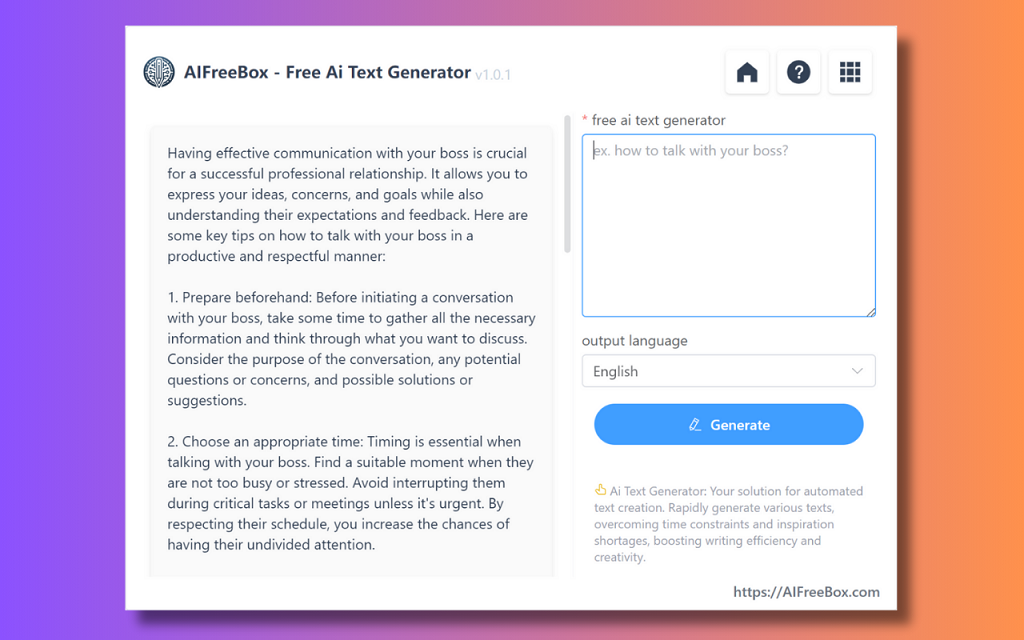
AIFreeBox offers lightweight AI responders you can use instantly — no setup, no subscription. It’s perfect when you just want to generate a quick, thoughtful reply without opening a full app.
Best for: Casual users, small business owners, or creators testing tone and style variations.
Pros:
- 100% free and browser-based
- Multiple tone options for replies
- No sign-up or installation required
- Useful for short replies and email copy
Cons:
- No memory or chat history
- Can’t integrate into real workflows
- Not suitable for ongoing customer conversations
Pricing: Completely free.
ChatGPT — Personalized AI Reply Bots on Demand
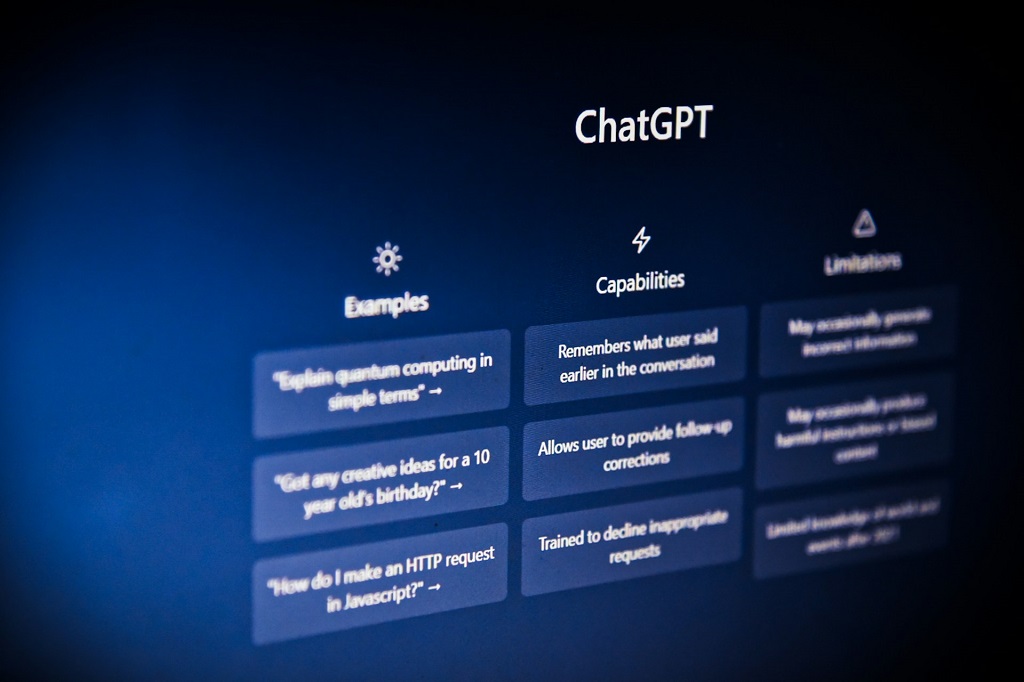
If you’re already using ChatGPT, building a custom GPT for replies is a powerful option. OpenAI now allows users to create GPT-powered bots that can be trained on specific tone, style, or even customer service flows. This makes it a favorite among tech-savvy creators, startup founders, and anyone who needs an AI reply to messages that actually reflects their voice.
You can design a reply assistant that understands your tone, your context, and your audience — whether you’re chatting with clients or managing a community. Custom instructions let you train it on FAQs, preferred phrases, and even rules for what not to say.
Best for: Creators, consultants, and developers who want to fully tailor how their replies sound and behave.
Pros:
- Fully customizable AI behavior and tone
- Can be trained on your data and rules
- Works across email, chat, or internal platforms
- Option to build NSFW or niche support bots
Cons:
- Requires some technical skill or patience to set up
- No native messaging integrations (you’ll need to embed it elsewhere)
- Doesn’t handle real-time conversations out of the box
Pricing: Included with ChatGPT Plus ($20/mo) for GPT builder access.
Reply.io — AI Outreach and Smart Replies for Sales Teams

Reply.io isn’t built for fans or DMs — it’s built for outreach. But its smart reply handling is one of the most effective use cases for AI in B2B. Sales teams use it to automate and personalize responses to inbound messages, especially when scaling cold outreach or follow-ups. It uses AI to scan incoming replies and then suggest context-aware responses based on the conversation stage.
It’s not a one-message-at-a-time tool. It’s a system for ai response to text messages at scale — great for founders, SDRs, and sales-focused businesses who want to manage replies without losing the human touch.
Best for: Sales and lead-gen teams managing dozens or hundreds of conversations at once.
Pros:
- Detects lead intent and prioritizes hot replies
- Suggests smart responses based on context
- Supports outreach campaigns and workflows
- Integrates with CRMs like HubSpot and Salesforce
Cons:
- Overkill for individual creators or casual use
- UX is designed for teams, not solo operators
- Not built for NSFW or fan-based chat use
Pricing: Paid tiers only, geared toward business users and sales orgs.
Jasper AI Chat — Brand-Consistent Replies for Busy Creators
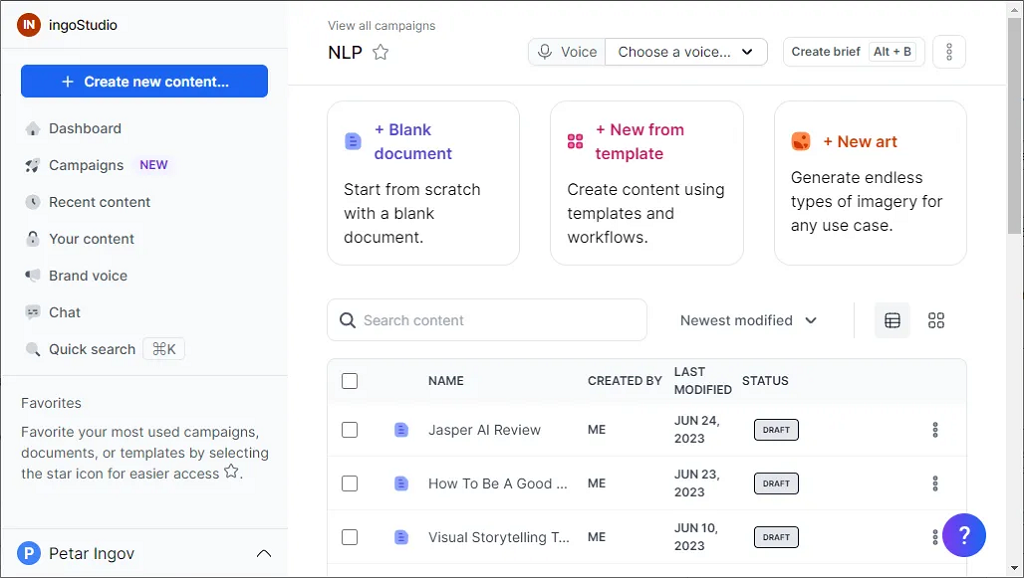
Jasper started as a content creation tool, but its AI chat module has quietly become one of the smartest options for personalized message replies — especially for businesses that care about tone and brand voice. You can train Jasper to match your writing style, use custom knowledge, and respond with a tone that feels like you — whether you’re sending a client update or replying to a fan.
Its strength lies in consistency. If you’re running a content-heavy operation or managing multiple channels, Jasper helps keep your tone aligned without sounding repetitive or forced. It’s not just an ai text reply generator — it’s a brand-safe assistant that keeps your communication sharp.
Best for: Creators, marketers, and brand managers who want replies that align with their voice, tone, and messaging.
Pros:
- Customizable voice presets and memory
- Pulls from your brand style or previous content
- Great for long-form responses or thoughtful replies
- Includes workflows for campaigns, emails, and chats
Cons:
- Less useful for live, short-form chat or NSFW
- No direct message integrations — you’ll copy/paste replies
- Premium pricing may be too much for casual use
Pricing: Premium only, with plans tailored toward marketers and business creators.
Create Your Own AI That Responds to Text with Scrile AI
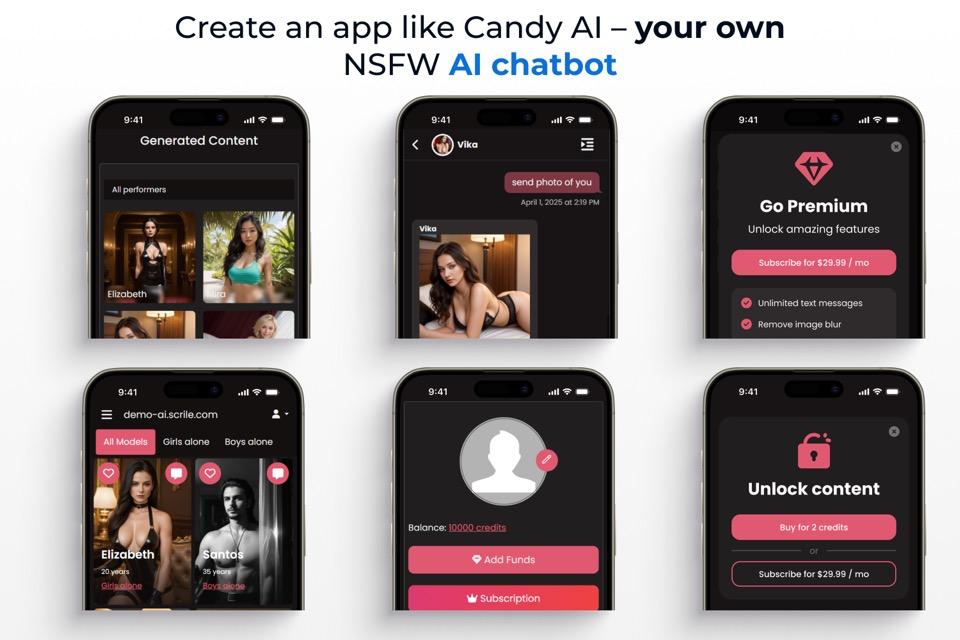
Sometimes, none of the existing tools are enough. You don’t just want quick replies — you want control. You want a chat app that speaks in your voice, reacts on your terms, and earns money while it does. That’s where Scrile AI comes in. It’s not a SaaS tool. It’s a white-label development partner that builds custom AI chat solutions tailored to your brand, your model, and your audience.
Unlike off-the-shelf reply tools, Scrile AI lets you define how your AI respond to text engine works. Want emotional tone shifts? You got it. Want NSFW filters and pay-per-reply logic? Done. You’re not stuck in someone else’s interface — you’re building your own.
Scrile AI is built to support:
- Adult content creators running pay-per-message NSFW chats
- Dating coaches offering roleplay training bots
- OnlyFans-style businesses with custom tip-to-unlock responses
- Therapy and mental health startups building AI journaling companions
- Customer support teams who need branded bots that follow strict tone guidelines
- Creators and influencers monetizing private conversations or content unlocks
You decide how messages are generated, what tone they carry, and what rules they follow. Want to integrate your own payment gateway? Use your own dataset? Add custom onboarding logic or tiered response behavior? Scrile AI doesn’t just allow that — it’s built for it.
Your community, your business, your flow — powered by AI that responds to text, your way. When you’re done testing generic tools, Scrile helps you build the real thing.
Conclusion – Better Replies, Built Smarter
AI tools that reply for you aren’t just novelties anymore — they’re part of how business gets done. From inboxes to DMs, people expect speed, clarity, and a response that sounds like a real human. The right AI respond to text tool can save time, keep your tone consistent, and scale your communication without burning you out.
That’s not just a feeling — it’s backed by adoption numbers. A recent guide on customer service auto-replies cites data from Heymarket showing how widespread automated responses already are in business messaging.
“In fact, 89% of businesses use auto-replies to manage customer expectations, and tailored messages significantly enhance engagement.”
— Sobot, “50 Automatic Reply Customer Service Examples”
When almost nine out of ten businesses rely on auto-replies, the real differentiator isn’t whether you automate — it’s how smart and on-brand those replies feel. That’s where the tools in this list — and especially a custom Scrile AI setup — turn basic automation into a real competitive edge.
But automation only goes so far when you’re boxed into someone else’s design. What happens when you need replies that reflect your brand, your tone, or even your industry rules? That’s where control matters more than convenience.
Scrile AI gives you that control. You don’t get a basic chatbot. You get your own branded reply system — custom logic, tone presets, monetization tools, and even NSFW capability if that’s your space. No limits. No cookie-cutter templates. Just an engine that responds exactly how you want it to.
So if you’re done testing generic tools and ready to build something that’s truly yours, contact the Scrile AI team today and start building your AI respond to text solution from the ground up.
Polina Yan is a Technical Writer and Product Marketing Manager, specializing in helping creators launch personalized content monetization platforms. With over five years of experience writing and promoting content, Polina covers topics such as content monetization, social media strategies, digital marketing, and online business in adult industry. Her work empowers online entrepreneurs and creators to navigate the digital world with confidence and achieve their goals.

by Polina Yan
Ever stared blankly at your phone, struggling to craft the perfect reply to an awkward message? You’re definitely not alone. As messaging apps become our primary form of daily communication, figuring out the right words is more important than ever. Fortunately, an innovative technology has emerged to simplify this process: the AI text message generator.
AI-driven messaging is quickly gaining popularity due to its ability to automate replies naturally and effectively. Gone are the days when artificial responses felt robotic and disconnected. Today’s tools can read the tone and context of any conversation, generating appropriate, personalized replies instantly. This is a huge leap forward for personal communication, businesses, social media managers, customer service teams, and creators alike.
In 2025, the competition among messaging tools is fierce, making it challenging to find the best AI text message generator for your needs. To help you navigate this crowded market, we’ve compiled a comprehensive guide highlighting the top ten AI tools currently dominating the industry. Whether you need fast replies, personalized engagement, or professional communication, there’s an AI solution ready to transform your messaging strategy. Let’s explore the best options available and discover how these intelligent tools can streamline your everyday interactions.
📊 Table: 10 Best AI Text Message Generators in 2025
| Tool | Best For | Key Benefits | Limitations |
|---|
| ChatGPT (OpenAI) | General use, customer support | Natural, context-aware replies, versatile | Subscription required for advanced features |
| Jasper AI | Marketing & branding | Consistent brand voice, templates | Less suited for casual messaging |
| Writesonic | Social media, quick replies | Fast, creative, beginner-friendly | Limited depth for professional use |
| Reply.io | Sales & outreach | Personalized engagement, CRM integration | Focused mainly on sales messaging |
| Simplified AI | Small businesses | Very easy to use, good for routine tasks | Basic features compared to larger tools |
| Claude AI | Customer service | Highly natural conversations, nuanced replies | Resource-heavy, higher cost |
| Copy.ai | Email & support | Context-driven, fast response creation | Best for short formats |
| Rytr | Small/local businesses | Affordable, flexible, intuitive | Less robust than enterprise tools |
| Motion AI | Productivity & team workflows | Task integration, scheduling, Slack/Google sync | More about productivity than messaging style |
| GrammarlyGO | Professionals | Polished, grammar-perfect outputs | Focus on correctness over creativity |
| Scrile AI (Custom-Built) | Businesses & creators needing full control | Brand-aligned, monetization-ready, scalable, secure | Requires custom setup (but long-term ownership) |
What is an AI Text Message Generator?
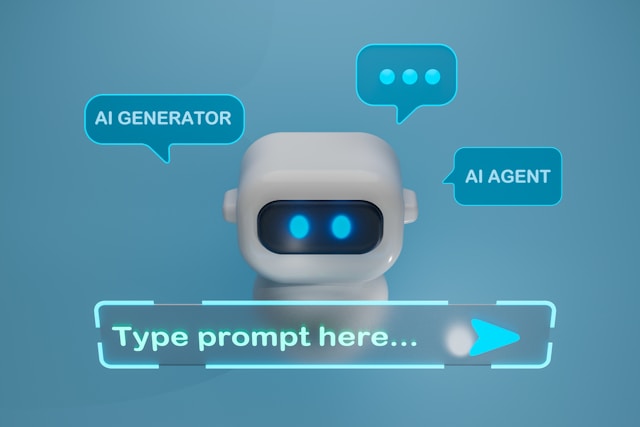
An AI text message generator is software that automatically creates relevant, natural-sounding responses to incoming messages. Smart software utilizes artificial intelligence to read text inputs in context, tone, and intent before generating a response. Machine learning and natural language processing (NLP) drive them, getting better with each use by a user to refine the responses.
AI text message generators aren’t just a fun shortcut for awkward replies. They’re becoming a serious part of customer engagement stacks, helping brands respond faster and with more context across chat, SMS, and social channels. Twilio even describes this shift as part of a broader “age of individualization,” where every interaction can be tailored to one person instead of a generic audience.
“Trend 1: Using AI can greatly improve customer engagement.”
— Twilio, 2024 State of Customer Engagement Report
For anyone choosing an AI text message generator, that’s the key takeaway: you’re not just buying speed, you’re buying better engagement. Tools that understand context and integrate with your communication channels will help you turn automated replies into real, measurable relationship-building.
AI text generators aren’t just for casual messaging—they cover emails, chats, customer support, and even social media interactions. Businesses use them to streamline support, ensuring faster, more consistent replies to customers. Creators and influencers leverage these tools to automate interactions, boosting follower engagement without sacrificing authenticity. Individuals benefit by quickly crafting responses, reducing the mental load of daily communication.
For example, an AI-powered generator can manage incoming customer questions, producing standard and professional answers immediately. Similarly, it helps content creators deal with dozens of fans’ comments every day, interacting with their audience and keeping them happy. With advanced tools that are available today, messages generated using AI now sound natural rather than generic or robotic.
These generators are not limited to plain text messaging, either—they can be used just as effectively for emails and internet chat services. The technology flows seamlessly across digital communication platforms, significantly improving personal and professional communication.
Essential Features When Choosing an AI Text Message Generator
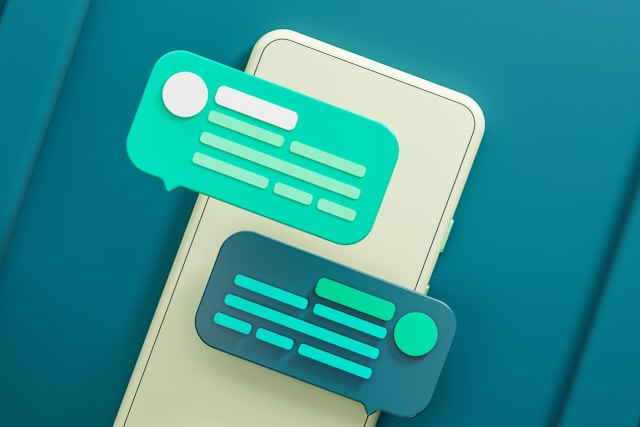
Selecting the ideal AI text message generator requires considering several crucial factors. The right choice is more than just generating messages—it makes interactions contextually accurate, secure, and user-friendly.
Response Quality and Accuracy
The AI needs to recognize context, tone, and intent and provide responses that are human-sounding and customized. The optimal tools employ advanced machine learning so responses sound like they were written by humans and never are canned or mechanical. An ideal message AI generator must be able to deal with varying conversations ranging from friendly discussions to formal emails.
That focus on tone and accuracy isn’t just a perfectionist detail—it’s the foundation of modern, AI-driven communication. In marketing and customer messaging, global consultancies now treat generative AI as the engine behind hyperpersonalization at scale, not just a way to save a few minutes on copy.
“Generative AI is poised to be a catalyst for a new age of marketing capabilities.”
— McKinsey, “How generative AI can boost consumer marketing”
When you pick an AI text message generator, you’re effectively choosing the quality level of that “new age.” Systems that really understand context, segment users, and adjust language for each recipient will feel like a natural extension of your brand—while weaker tools will still sound like canned bots.
Ease of Use and Simplicity
Not all people are technology oriented, so the interface has to be simple and straightforward. The users must not be struggling with complicated settings or instructions. Ideally, the software simplifies the entire process, just indicating how to respond to a text generator with minimal effort.
Integration Capabilities
A strong text message AI generator is completely compatible with your existing platforms. Whether you’re handling social media, customer support, or company communication, compatibility with popular messaging and email systems is essential. Smooth integration ensures workflow efficiency and productivity.
Privacy and Security
Security first, especially when it involves personal conversations or sensitive data. Top-tier solutions offer safe encryption and open privacy policies to enable users to employ AI generated messages safely without any concerns for privacy.
Security and encryption are only one side of the trust equation. The other side is how people perceive AI-written messages. Research from Harvard Business School shows that even when chatbots write messages that sound convincingly human, employees may still judge those communications as less credible once they know AI is involved.
“A chatbot might be able to write emails that sound human, but can the technology respond to staff questions just like the boss would?”
— Ben Rand, summarizing research by Prithwiraj Choudhury, Harvard Business School Working Knowledge
For your AI text message strategy, that means safety and transparency should go hand in hand. The best generators don’t just produce fluent text—they help you design flows, disclosures, and handoffs to humans so that automated messages remain both secure and genuinely trustworthy.
Quick Checklist for Choosing an AI Generator Message:
- Contextual accuracy and human-like replies
- User-friendly interface with clear instructions
- Compatible integration with existing tools
- Strong privacy and data security
- Clear tutorials showing how to respond to a text generator
Considering these essential features ensures you’ll find the best solution to simplify and enhance your AI text messaging experience.
10 Best AI Text Message Generators in 2025
Here is my Top 10 of AI Messages Generators for your consideration:
ChatGPT by OpenAI

ChatGPT is a versatile AI text message generator renowned for natural and accurate conversational abilities. It easily creates personalized replies, understanding context and tone accurately. Businesses often use it to automate customer support messages, improving efficiency and client satisfaction. For example, online communities use ChatGPT to craft engaging replies instantly, keeping conversations lively without manual effort. Additionally, content creators benefit by quickly generating ideas and responses, streamlining their workflow significantly.
Key Benefits:
- Highly accurate contextual responses
- Ideal for engaging conversations
- Versatile in content creation and support messaging
Jasper AI
Jasper AI is optimal for creating professional-quality messages with consistent branding, perfect for promotional and marketing messages. It optimizes much time spent on producing personalized messages, enhancing marketing efficacy. Businesses widely utilize Jasper for automated email responses, blog posts, and customized messaging. A recent case illustrates Jasper increasing customer email interaction by approximately 40% in an online business, proving its efficacy in the workplace. Individuals interested in how to respond to a text generator will discover Jasper offering simple-to-use templates for easy implementation.
Key Benefits:
- Professional, brand-consistent messages
- Easy-to-use templates for rapid messaging
- Boosts engagement in marketing scenarios
Writesonic
Writesonic provides fast, creative, and concise messaging suitable for social media and quick interactions. Its user-friendly interface helps beginners quickly master AI messaging, creating engaging replies effortlessly. Individuals appreciate its speed and ease of use, crafting short social posts or responding quickly to community messages. A social media administrator, for example, can create numerous creative responses daily, increasing audience interactions by a significant amount. Writesonic integrates seamlessly into current tools, becoming a go-to message response generator for busy creators.
Key Benefits:
- Fast, creative message generation
- User-friendly for beginners
- Integrates smoothly with social media platforms
Reply.io
Reply.io is a powerful solution for sales and marketing teams. It stands out by generating highly targeted, personalized messages to engage potential customers effectively. The platform helps businesses respond to customer queries in a timely manner and also boost sales conversion rates. A sales team achieved a 45% client response when using Reply.io due to customized, targeted AI-generated messages. This AI message text generator integrates seamlessly with CRM and email systems, boosting business productivity.
Key Benefits:
- Strong personalization for sales messages
- Seamless integration with CRM systems
- Increased customer response rates
Simplified AI
Simplified AI is perfect for new users of AI text messaging, offering simplicity and ease without sacrificing quality. It’s especially perfect for small business owners or single operators who prefer straightforward tools. Users can quickly craft clean, concise messages ideal for customer service or general use. For example, a local business used Simplified AI to handle routine customer inquiries, saving a lot of response time. Simplified’s intuitive interface simplifies the process of people knowing how to respond to a text generator, thus it’s easy to embrace AI.
Key Benefits:
- Extremely user-friendly and beginner-focused
- Ideal for routine business communications
- Effective for quickly automating repetitive tasks
Claude AI by Anthropic

Claude AI is renowned for having very human-like conversation messages. Unlike the typical AI-generated messages, Claude generates responses that not only appear but actually are natural and subtle. Businesses use Claude routinely in customer service so that clients have meaningful interactions rather than generic responses. For instance, an online fashion store uses Claude AI to handle customer inquiries effortlessly, greatly improving user satisfaction with engaging, personalized conversations.
Key Benefits:
- Exceptionally realistic conversational style
- Ideal for customer service interactions
- Generates personalized, nuanced replies
Copy.ai
Copy.ai is streamlined communication built for customer support and marketing use cases. This AI message generator excels at creating brief, context-driven responses for text messages and emails. A tech support business might leverage Copy.ai to automate replies, speeding up communication without a loss of quality or personalization. It’s ideal for businesses that need precise messaging in a timely fashion.
Key Benefits:
- Ideal for email and text-message communication
- Tailored messages for marketing and customer support
- Speeds up response time significantly
Rytr
Rytr is a versatile AI-powered text message software perfect for small businesses looking to automate customer interactions. Easy and affordable, Rytr seamlessly adapts to various messaging requirements, including promotional messages or social media replies. For example, a small local café used Rytr to manage customer inquiries and promotional messages, and their community engagement skyrocketed tremendously.
Key Benefits:
- Flexible and adaptable for multiple messaging needs
- Excellent for small and local businesses
- Affordable and intuitive platform
Motion AI
Motion AI is a productivity-driven messaging solution designed to streamline and manage communication efficiently. It is perfect for businesses with several messaging tasks, which streamlines internal communications and task assignment. Businesses often utilize Motion AI to remove internal email noise, automate standard responses, and manage complex scheduling tasks effectively. Teams love how it integrates easily with productivity tools like Slack and Google Workspace, making daily work easier.
Key Benefits:
- Strong focus on productivity and task management
- Excellent integration with popular apps
- Simplifies internal business communication
GrammarlyGO
GrammarlyGO specializes in generating polished, grammatically accurate text messages ideal for professional contexts. Businesses and professionals trust GrammarlyGO for crafting error-free emails, messages, and professional communications instantly. It’s particularly valuable for industries that prioritize clarity, professionalism, and grammatical precision. Professionals frequently rely on GrammarlyGO to create emails and texts, ensuring every message reflects professionalism and clarity.
Key Benefits:
- Grammatically polished messaging
- Perfect for professional and business communications
- Enhances clarity, credibility, and professionalism
Why Scrile AI is the Best for Developing Your Custom AI Text Message Generator

Scrile AI isn’t your average AI messaging tool—it’s a specialized software development company. Instead of providing standard off-the-shelf products, Scrile designs fully personalized AI-generated message solutions. Businesses don’t have to adjust their strategy to fit generic tools. Scrile’s custom approach ensures every message aligns perfectly with brand identity, tone, and target audience.
Ultimate Flexibility Across Industries
Flexibility is what sets Scrile apart. Its tailored solutions find their place in diverse industries, from content creators and influencers to social networks and dating sites. Businesses use Scrile AI for customer support, marketing automation, or online community management with ease. Whether automating casual chat or formal email, Scrile adapts to the style of communication required.
Complete Customization and Ease of Use
Scrile places customization firmly in the hands of users, even demonstrating how to properly respond to a text generator. Tone of message, style, and personality of their AI-powered conversations are in the hands of companies. What this translates to is every message sounds real, not robotic. The interface is easy to use, making integration straightforward without technical expertise or large-scale resources.
Influencer Success Story: Personalized Engagement
An influencer used Scrile’s proprietary messaging technology to create personalized responses for fan interaction. Scrile AI worked meticulously to learn the tone of the influencer and craft responses identical to those penned manually. The result was far more active audience interaction, increased loyal followers, and increased engagement on their site. The personalized approach enabled authentic interactions without losing any efficiency or quality.
Robust Privacy and Security
Scrile AI takes privacy and data security seriously. The company ensures all conversations and private data are kept private and secure, providing a peace of mind to users. Businesses from sensitive industries, including adult or dating websites, confidently use Scrile technology, depending on its cutting-edge security features to protect user information every step along the way.
Continuous Improvement Through Adaptability
Unlike standard messaging tools, Scrile’s custom solutions evolve dynamically alongside your business. Every interaction helps refine the AI’s responses, steadily increasing their accuracy and relevance. Over time, this ensures that your AI-generated messages consistently improve, always meeting audience expectations and business goals effectively.
Scrile AI provides complete, end-to-end support, guiding clients seamlessly from concept to launch at every step. This dedicated approach ensures your custom AI solution aligns perfectly with your brand’s unique voice and goals, simplifying how you interact through technology.
Conclusion
AI for text messages has transformed communication, productivity, relationships, and engagement with audiences. Personal conversations, customer support interactions, and professional communication are all enhanced by efficient, contextually tuned AI-generated messages. The right AI text message generator will significantly automate your routine, allowing more natural, customized interaction without wasted time.
Scrile AI is the ideal partner for users who need tailor-made messaging solutions compared to mass-market software. Its technology delivers customization, adaptability, and unmatched flexibility across diverse industries and communication styles. Whether you’re an influencer, a business, or an online platform, Scrile AI provides comprehensive support—from initial concept through full integration.
If you’re looking to revolutionize your messaging strategy and create genuinely personalized conversations, explore Scrile AI’s custom development solutions today. Discover how tailored AI messaging technology can enhance your connections and interactions, making every message impactful and meaningful.
Polina Yan is a Technical Writer and Product Marketing Manager, specializing in helping creators launch personalized content monetization platforms. With over five years of experience writing and promoting content, Polina covers topics such as content monetization, social media strategies, digital marketing, and online business in adult industry. Her work empowers online entrepreneurs and creators to navigate the digital world with confidence and achieve their goals.

by Polina Yan
Ever wished for a personal assistant who never needs sleep, never forgets, and always has the right answer? In 2025, the best AI assistants are stepping into this role, offering virtual support that goes far beyond basic automation. These digital helpers manage everything from scheduling meetings and setting reminders to generating creative content and even managing smart home devices.
AI assistants are no longer just for tech enthusiasts. They have become essential tools for businesses, creators, and everyday users who want to save time and boost productivity. Whether you need help organizing your day, interacting with customers, or simply setting the perfect ambiance at home, there’s an AI assistant designed to make life easier.
AI assistants like ChatGPT, Claude or Gemini feel so natural to use that it’s easy to forget how new this technology actually is. Large research firms now describe this moment as a turning point in how people communicate with software.
“ChatGPT and its competitors have captured the imagination of people around the world in a way AlphaGo did not, thanks to their broad utility—…” — McKinsey & Company
When even conservative analysts highlight the “imagination” and broad utility of these tools, it reinforces that AI assistants are not a niche experiment anymore. They’re becoming a standard interface for search, content creation, and everyday problem-solving — which is exactly why choosing the right assistant in 2025 really matters.
In this article, we’ll explore the top AI assistants of 2025. We’ll look at big names like Google Assistant, Amazon Alexa, and Apple Siri, as well as innovative tools like ChatGPT, Motion AI and custom solutions from Scrile AI. Each assistant brings unique features to the table, making it easier to find the perfect fit for your needs—whether for personal tasks or professional productivity. Let’s find out what makes the best AI assistant and discover which one might become your new favorite virtual helper.
Top 7 AI Assistants in 2025 – Quick Comparison
| Assistant | Best For | Strengths | Limitations | Ecosystem Fit |
|---|
| Google Assistant | Everyday + work routines | Google Workspace & smart home integration, proactive suggestions | Best inside Google ecosystem | Google users |
| Amazon Alexa | Smart home + retail tasks | Huge device network, “Skills” marketplace, shopping & automation | Less natural conversation; retail bias | Amazon ecosystem |
| Apple Siri | Apple device owners | Seamless iOS/macOS integration, HomeKit control, messaging | Limited outside Apple hardware | Apple ecosystem |
| Microsoft Cortana | Office productivity | Deep Microsoft 365 integration, meeting scheduling, smart suggestions | Phasing out for consumer use | Windows/Office users |
| Samsung Bixby | Samsung smart devices | Strong SmartThings control, TV/phone integration | Weak app ecosystem, limited global reach | Samsung ecosystem |
| ChatGPT (OpenAI) | Content & communication | Human-like text replies, content creation, chatbot support | No native voice/device control | Cross-platform |
| Motion AI | Productivity & scheduling | Smart auto-scheduling, task priorities, Slack/Calendar integration | Focused on work tasks only | Teams & professionals |
What is an AI Assistant?

An AI assistant is a smart digital helper designed to manage tasks, answer questions, and streamline both personal and professional activities. These virtual assistants use technologies like natural language processing and machine learning to understand voice commands, manage schedules, set reminders, and control smart home devices.
The best AI personal assistants can integrate with apps and services, providing hands-free convenience for busy professionals and everyday users alike. They excel in business environments, helping with tasks like email management, meeting scheduling, and data organization. On creator platforms and social media, they assist with content generation and audience engagement.
The rise of best AI virtual assistants has transformed how we interact with technology, offering tailored solutions for work productivity and simplifying everyday life. Whether managing a to-do list, setting up a smart home, or enhancing business communications, AI assistants bring efficiency and ease to daily routines.
This isn’t just a new label for old productivity tools. Companies that work with virtual assistants every day note that AI has already reshaped how these assistants feel and what they can realistically handle.
“The impact of AI on virtual assistant tools has been transformative, bringing about significant enhancements in user experience, productivity…” — Brickwork India
Thinking about AI assistants as a “transformative” layer helps frame the rest of this guide: you’re not just picking a chat app, you’re choosing infrastructure for how you plan, communicate and work. The tools we review below — from mainstream assistants to custom solutions — only make sense when you see them through this long-term lens.
Benefits of Using an AI Assistant
AI assistants bring many benefits to both personal and professional life. They help users stay organized, manage tasks efficiently, and maintain a consistent communication style in business settings. Here are the top advantages of using an AI personal assistant for business and everyday use:
- Increases Productivity: AI assistants handle repetitive tasks like scheduling meetings, sending reminders, and organizing calendars. This automation frees up time for more important activities.
- Enhances Time Management: These tools provide smart reminders, integrate with calendars, and help manage daily routines smoothly. They reduce the chances of missed appointments or deadlines.
- Ensures Consistency: Businesses often struggle to maintain a uniform brand voice across all communications. An AI assistant helps keep messages consistent, whether it’s in emails, social media posts, or customer support responses.
- Practical Example: A content creator using a best personal assistant AI can manage fan interactions on social media more efficiently. The assistant can generate quick responses to comments, draft messages, and even schedule posts to maintain regular engagement.
- Versatile Uses: With so many AI assistant names available, choosing who is the best AI assistant depends on specific needs. Some excel at managing business tasks, while others focus on personal organization or creative support.
AI assistants are more than just digital helpers. They act as smart partners that enhance productivity, improve communication, and simplify day-to-day tasks. Whether at work or home, these tools adapt to user needs and make life easier.
From a business perspective, the real test for any AI assistant is simple: does it actually give people back meaningful time? Independent analysts emphasize that the biggest gains appear when assistants take over repetitive, low-value work that clogs calendars.
“AI assistants significantly reduce the burden of routine and repetitive tasks, freeing employees to focus on higher-value work.” — Enterprise Management Associates (EMA)
This is exactly the shift you’re aiming for when you roll out AI assistants across a team or build your own: move routine, rules-based tasks to the AI, and let humans focus on strategy, creativity, and relationships. As you compare the tools in this article — including custom options like Scrile AI — keep that productivity test in mind.
Top 7 AI Assistant Tools in 2025
AI assistants are transforming how we manage tasks, automate routines, and enhance productivity. Let’s explore the first set of top AI assistants making waves in 2025:
Google Assistant
Google Assistant is a powerhouse in the AI assistant world. It offers integration to Google Workspace and smart home devices. With voice commands, one can schedule a reminder, schedule a meeting, and manage routine. For instance, one can easily command, “Hey Google, schedule a meeting at 3 PM,” and it will be scheduled to the calendar. It also offers personalized suggestion like an early leave reminder to catch an appointment based on traffic information. Its usage both home and office makes it an option to be considered by the majority.
Amazon Alexa

Amazon Alexa has retail and home automation functions. It connects to various smart devices to control via voice commands lights to home defense systems. Alexa is also an easy tool to use to manage shopping lists, remind one about appointments, and automate office operations. Small businesses employ Alexa to manage stock quantity, orders handling, and office communications automation. Alexa’s “Skills” option offers flexibility to enable users to use the use to suit some specific purposes, be it office or home.
Apple Siri
Siri is an essential AI partner to the user in the Apple ecosystem. It offers seamless integration to the devices manufactured by Apple, thereby making iPhones, iPads, Macs, and smart home devices voice-controlled through the integration through the use of HomeKit. It offers users routine productivity through the sending of messages, reminder creation, and control of smart home devices. It can be used to send a message, play a song, or control the thermostat. The seamless integration that it offers to the other Apple programs and devices makes the usage seamless.
Microsoft Cortana
Microsoft Cortana has been designed specifically to suit office users. It fully supports Windows integration and Microsoft 365. Hence, using it within an office is the best option. Cortana supports the creation of meeting schedules, the creation of reminders, and the organization of the task. Cortana can compose emails and also offer smart suggestions during the meeting. For instance, a professional can instruct Cortana to schedule the day, and it will create a scheduled calendar based on the entries and priority. Its productivity-related functions enable Cortana to be an efficient tool to enhance the productivity of the work.
Samsung Bixby
Samsung Bixby is the most intelligent to be employed by users under the Samsung ecosystem. It offers robust voice control of Samsung devices like smartphones, tablets, smart TVs, and smart home devices. Samsung Bixby can be used to automate the sending of messages, calling, and controlling smart devices through basic voice commands. As an example, one can easily employ the command, “Turn off the lights, Bixby,” and the command will be executed. It supports Samsung’s SmartThings app that offers easier control of devices through one interface.
ChatGPT by OpenAI

who is the best ai assistant
Unlike traditional voice assistants, ChatGPT is a powerful tool for text-based interactions. It excels in content generation, answering questions, and managing online interactions. Many businesses and creators use ChatGPT as a virtual assistant to draft responses, generate content ideas, and engage with audiences. For instance, a social media manager might use ChatGPT to create thoughtful replies to community comments or to brainstorm creative post ideas. It’s also popular for creating automated chatbots that provide human-like customer support.
Motion AI
Motion AI is an efficient tool that supports users to organize schedules, manage work, and be more efficient. It offers the possibility to add smart scheduling, task organization, and reminder automation. As an artificial tool to professional users, Motion AI can help users organize the meeting calendar, assign priority to the tasks, and streamline the workflow. The best way to understand how Motion AI functions is the integration that it offers to use Google Calendar and Slack to automate the routine to allow teams to work strategically.
Which AI Assistant is Right for You?
Choosing the best AI assistant will be a case of one’s specific needs. Google Assistant and Alexa are best used to control the smart home. Siri and Bixby are best used within each respective ecosystem but Cortana is best used within the office. ChatGPT will create sophisticated writing but Motion AI produces the best productivity and task management. Each one has something to bring to the table to create the best pairing to use within the home and the office.. However, there is also another solution if you need something created just for you.
Why Scrile AI is The Best Solution for Building Your Own AI Assistant

Scrile service offers a robust service for creating customized AI assistants tailored to unique business needs. Unlike generic tools, Scrile AI allows businesses to develop AI personal assistants for business or personal use with features and interactions that align perfectly with their brand and goals.
One of the biggest advantages of Scrile AI is its ability to deliver beyond off-the-shelf tools. Instead of using a standard AI assistant, businesses can design solutions specifically for their industry. Scrile solutions support a wide range of markets, including e-commerce, education, tech services, and niche sectors like creator platforms, influencer accounts, dating sites, social media, and adult websites. This adaptability makes it a versatile choice for businesses aiming to integrate a best personal assistant AI that can handle complex interactions.
Real-world adaptability is another strength of Scrile AI solutions. The AI assistants developed through its platform are not static; they learn from interactions, evolve with the business, and remain relevant over time. For example, a business could create an AI assistant that not only automates communication but also provides personalized responses and enhances user engagement. This assistant might manage customer inquiries, support sales teams, or automate social media interactions—showing why Scrile AI is a top choice for building a dynamic and effective AI assistant.
If you’re looking for the best AI assistant for your business, Scrile offers the tools and flexibility to create an assistant that meets your exact needs. It is the ideal platform for those who want a tailored solution instead of a one-size-fits-all approach. Explore how Scrile can help you develop a personalized AI assistant that keeps your brand ahead of the competition.
Off-the-Shelf AI Assistants vs. Scrile AI
| Option | Branding & Ownership | Flexibility | Monetization | Best Fit |
|---|
| Standard AI Assistants (Google, Alexa, Siri, etc.) | Vendor-controlled | Fixed features, limited customization | None | General users & households |
| Scrile AI (Custom Assistant) | 100% branded & owned | Fully customizable: text, voice, NSFW/SFW, CRM hooks | Built-in: subs, tips, PPV | Businesses, creators, niche platforms |
Conclusion
The best AI assistant can make a real difference in both personal and business life. These digital helpers boost productivity, streamline tasks, and offer valuable support in everyday routines. Whether you’re using Google Assistant for smart home control, Amazon Alexa for managing e-commerce tasks, or ChatGPT for content generation, each tool brings unique benefits to the table.
For businesses looking to go beyond generic solutions, Scrile AI offers a unique opportunity. Instead of settling for a standard AI personal assistant, you can develop a custom assistant tailored to your specific needs. Scrile’s solutions provide all the tools required to build an AI that aligns perfectly with your brand and industry. This flexibility is ideal for companies in niche markets or those with specialized communication needs.
If you’re ready to create a personalized AI assistant that fits your exact needs, explore Scrile AI tools today. It’s the first step towards building a smarter, more efficient digital assistant that can keep your business ahead of the curve.
Polina Yan is a Technical Writer and Product Marketing Manager, specializing in helping creators launch personalized content monetization platforms. With over five years of experience writing and promoting content, Polina covers topics such as content monetization, social media strategies, digital marketing, and online business in adult industry. Her work empowers online entrepreneurs and creators to navigate the digital world with confidence and achieve their goals.

by Polina Yan
Imagine transforming your selfie into an engaging, creative digital persona instantly. Thanks to powerful advancements in AI, it’s now simpler than ever to create avatar from photo. AI avatar makers are not just quicker—they’re also affordable and easily customizable. People from all walks of life, including influencers, gamers, and business owners, now use personalized avatars to stand out online. Instead of settling for ordinary profile images, individuals can showcase their creativity by using digital representations. This shift highlights how technology helps users express identity and enhance branding.
Ready to explore the best solutions to effortlessly create an AI avatar? In this article, we’ll guide you through the top five AI-powered tools available in 2025. From free AI avatar makers ideal for beginners, to customized solutions perfect for creators, we’ve covered all you need to know. Let’s dive in and discover how you can turn simple selfies into stunning, professional-quality avatars today.
What is an AI Avatar Maker?
An AI avatar maker is software that transforms ordinary photos into creative and personalized digital avatars using artificial intelligence. These smart tools analyze uploaded images, identifying facial details and expressions with machine learning algorithms and neural networks. After analyzing the original photo, AI then recreates the image as an entirely new avatar, offering various visual styles. Users can effortlessly create AI avatar from photo with realistic, cartoonish, or artistic appearances.
Regular users often use these avatars for social media profiles, gaming accounts, and unique personal branding. Businesses find value by creating a custom AI avatar to represent their brands, enhance marketing, or add personalized interaction on websites. AI avatar makers simplify complex digital design processes, providing high-quality avatars without professional graphic skills. This technology makes creative avatar generation accessible to anyone, from individuals to businesses, regardless of their budget or technical background. It’s an engaging, practical tool for building a standout online identity.
🔎 Best Tools to Create Avatar from Photo in 2025
| Tool | Strengths | Limitations | Best For |
|---|
| Lensa AI | Realistic, polished portraits; viral on socials | Mostly style packs, limited customization | Influencers & social media users |
| Fotor | Free, beginner-friendly, quick results | Basic output, fewer pro features | Bloggers & small businesses |
| StarryAI | Artistic & abstract styles; creative variety | Not suited for realistic avatars | Artists & digital creators |
| Picsart | Avatars + strong editing tools, background tweaks | Subscription needed for full features | Marketers & content campaigns |
| ArtGuru | Stylish options (sketch, watercolor, portraits) | Focused on aesthetics, less pro/business | Creators & hobbyists |
| Scrile AI | Fully custom avatar software, monetization, brand control | Requires tailored setup, not free | Businesses, influencers, niche platforms |
Benefits of Using an AI Avatar Creator

AI avatar makers offer great branding opportunities with the ability to create attractive, memorable online personas. Businesses and users can differentiate themselves in overcrowded platforms with ease through unique avatars. Users can avoid incurring significant design costs through the use of graphic designers, as users can easily create professional-level avatars in no time themselves. AI avatar makers also offer several different creative directions—realistic, cartoon-like, artistic, or abstract.
For instance, influencers frequently adopt custom AI avatars to enhance their personal brands and boost engagement. An influencer who previously struggled with visibility online could instantly improve follower interaction by switching to distinctive, visually appealing avatars. Within days, follower engagement significantly increased, demonstrating the real-world impact of visually appealing avatars.
Moreover, such tools are not used for professional purposes alone. Free AI avatar makers benefit non-professionals in seeking social media or gaming accounts, quickly creating their customized avatars. By using easy interfaces, AI avatar makers simplify design for everyone to enhance their online identity.
Top 5 Tools to Create Avatar from Photo in 2025
Following are five top tools for designing personalized avatars in 2025. Ranging from realistic to stylized, these easy-to-use tools provide the solution for personal branding, social media, or business communication. Learn the features, advantages, and how each tool can simplify the process to create avatar from photo to enhance your online presence and convey your message to people effectively.
Lensa AI

Lensa AI became popular overnight with its realistic and beautiful avatars. Lensa is for social media users and turns plain selfies into classy avatars in just a few seconds. Lensa uses powerful neural networks to capture the look and demeanor of your original image. Influencer accounts, for one, saw over 35% engagement with followers when profiles were updated with Lensa avatars.
Fotor Avatar Maker
Fotor Avatar Maker is an excellent free AI avatar maker, perfect for newbies. The website boasts easy-to-use features, which turn photographs into personalized avatars in a matter of seconds, no design skills required. A selection of various looks, such as cartoon-like, realistic, and artwork styles, is provided. The ease of Fotor made it the go-to tool for bloggers, social media users, and small business owners requiring beautiful branding with or without professional designers.
StarryAI
StarryAI is the perfect option for creators seeking something distinctive. It is known for its extensive range of artwork, creating avatars ranging from abstract painting to highly intricate digital artwork. The user just uploads a photograph, selects the type of artwork desired, and leaves the rest to StarryAI. StarryAI avatars are typically used by artists and digital artists for fan interactions, creating distinctive visual identities, or enhancing portfolios. It is great at creating a powerful look for competitive spaces such as Instagram and TikTok.
Picsart

Picsart combines AI precision with powerful editing features to allow users to create avatar AI from photo in various design concepts with ease. It is both for professionals and hobbyists, and it provides avatars for social media, business branding, or web campaigns. The user can quickly design avatars, edit details, incorporate backgrounds, and customize visual elements. Avatars created by Picsart are used by marketers to fine-tune images in campaigns, which enhances click-through.
ArtGuru
ArtGuru can professionally convert ordinary selfies into unique digital artwork with the simplest efforts. ArtGuru is a beloved choice among artists and influencers and offers fashionable styles including watercolor, cartoon, realistic portrait, and hand-drawn sketch. Its user-friendly interface allows for rapid production of avatars, which can be experimented with speedily until the desired look is obtained. Artists and creators use ArtGuru avatars extensively on social media websites like Instagram or TikTok, which tends to increase the engagement of viewers to a significant extent. The website offers different kinds of avatars suitable for different online groups.
Why Choose Scrile AI for Custom Avatar Generation

Scrile AI isn’t just another generic free AI avatar maker. Instead, it’s a specialized software developement service creating custom solutions for avatar generation. This flexibility makes Scrile AI perfect for businesses, influencers, and digital creators aiming to create avatar from photo tailored precisely to their audience.
The main strength of Scrile AI is its adaptability. Influencers looking to boost audience interaction can effortlessly create an AI avatar tailored specifically to their image. Businesses can build branded avatar tools to attract customers and strengthen loyalty. Even niche markets like adult websites or specialized creators can leverage Scrile’s custom technology to drive engagement.
For instance, imagine a content creator who used Scrile’s tools to design avatars from fan-submitted selfies. This unique feature significantly increased fan interaction, growing subscriptions and revenue by over 40%. With Scrile’s intuitive solutions, creators don’t need technical skills to deliver these experiences effectively.
Scrile AI stands apart through its flexibility, customization, and ease of integration. Users can quickly launch their avatar creation solutions without extensive technical expertise. If you’re exploring how to create an AI avatar, Scrile AI offers the perfect solution—simple, personalized, and designed precisely for your business needs.
Conclusion
AI-based avatar creation turns ordinary images into interactive, customized digital avatars while Scrile AI excels in offering end-to-end personalized services for the easy generation of avatar from photo. Make your online existence brighter with Scrile AI technology by designing innovative, customized avatars exclusively for your use.
Polina Yan is a Technical Writer and Product Marketing Manager, specializing in helping creators launch personalized content monetization platforms. With over five years of experience writing and promoting content, Polina covers topics such as content monetization, social media strategies, digital marketing, and online business in adult industry. Her work empowers online entrepreneurs and creators to navigate the digital world with confidence and achieve their goals.

by Polina Yan
Imagine this: Your inbox is overflowing, chat notifications are piling up, and you’re still staring at the blinking cursor, wondering how to craft the perfect response. Now, picture an AI response generator that instantly transforms your raw thoughts into polished messages—for emails, chats, or any text-based communication.
AI response generators are not all about convenience. They are powerful tools that help businesses maintain their brand voice, speed up customer support, and turn everyday communication into a breeze for individuals. Whether you are handling business emails or juggling multiple chat conversations, these AI generators can be a game-changer in 2025.
In this article, we will look at the top AI response generators, with a focus on those that perform best in chat, email, and text applications. Get ready to discover how the right AI text response generator can streamline your workflow and elevate your communication.
What is an AI Response Generator?

An AI response generator is a smart tool designed to create quick, relevant, and context-aware replies for emails, chat messages, and other text-based communications. Think of it as a virtual assistant that doesn’t just autocomplete your thoughts but crafts entire responses, saving you time and mental energy.
These technologies work by looking at your input—a customer inquiry, an internal email, or just a plain text message—and generating a response based on advanced algorithms and machine learning algorithms. They draw on vast language pattern libraries and previous interactions to create responses not only accurate but also in tone and context you desire.
From AI chat response generators to enhance customer service chatbots to AI email response generators that compose professional emails in seconds, the uses are varied. Whether you are a company seeking to boost efficiency or an individual seeking to automate everyday communication, AI text response generators can be a game-changer for productivity.
The Benefits of Using AI Response Generators
An AI response generator can significantly boost productivity by removing guesswork in communication. Instead of spending valuable time composing emails, responding to chat messages, or typing text responses, individuals and businesses can utilize AI tools to generate professional, context-based, and relevant responses in seconds.
For companies, the benefits are clear. Imagine a customer service department using an AI chat response generator that offers appropriate replies instantly. Not only does it accelerate replies, but it also encourages response consistency. A case study illustrated a company increasing customer support effectiveness by 30% when it implemented an AI text reply generator. The AI handled repetitive questions, allowing human representatives to work on more challenging issues.
At a personal level, an AI email response generator can help deal with full inboxes, with smart recommendations making it faster and easier to reply to emails. For business or private use, text response generators offer the perfect mix of speed, precision, and simplicity, and introduce communication into everyday life rather than a hassle.
How to Choose the Best AI Response Generator

When you select an AI response generator, it’s not necessarily about getting something that spews up text. It’s about getting a solution that actually works for your workflow and communications. The proper solution can comfortably handle everything from instant chat responses to crafting beautiful email responses. Here’s what to search for:
- Accuracy. The generator should create context-specific and appropriate responses. Advanced tools utilize natural language processing (NLP) to understand not just words, but the meaning of words. This ensures that whether you’re using an AI chat response generator or an email response generator, the replies make sense and align with your messaging.
- Customization. It is critical aspect, as each brand or person has a unique voice. A good AI text response generator should allow for tone, style, and even vocabulary changes. For companies, this feature is critical to maintain brand consistency on all platforms.
- Integration. The best tools are not isolated; they integrate perfectly with your current tech stack. Whether you need an AI email response generator that works with Gmail or a message response generator for your CRM, the integration features add much value to the AI.
- Ease of Use. Sophisticated AI is great, but it shouldn’t require a PhD to operate. The interface should be intuitive, offering features like one-click response generation and the ability to tweak outputs quickly.
- Affordability. Whether you’re an enterprise with a large budget or an individual looking for a free tool, the cost-to-benefit ratio matters. Usage-based scalable pricing is offered in some tools, which can be a perfect option for growing businesses.
Tips for Different Users:
- Businesses. Look for analytics, response templates, and multi-user capabilities. These can help increase productivity, allow monitoring of communication metrics, and offer consistency across the company.
- Individuals. If you’re focused on personal productivity, a lightweight text response generator with pre-made suggestions and a straightforward interface might be ideal.
By weighing these factors carefully, you’ll find an AI response tool that not only meets but exceeds your expectations, making your communication smoother, faster, and more effective.
Top 7 AI Response Generator Tools in 2025: The Best of the Best

When it comes to AI response generators, the market is brimming with tools that promise to streamline your communication. But not all are created equal. Here’s a look at some of the best options available in 2025, offering everything from smart chat replies to polished email responses.
| Tool | Best For | Key Strengths | Limitations |
|---|
| ChatGPT (OpenAI) | Cross-platform use, business & personal | Human-like replies, adaptable tone, email & chat integration | Subscription needed for advanced features |
| Jasper AI | Marketing & branded messaging | Strong brand voice control, CRM/email integrations | Better for content teams than casual users |
| Writesonic | Creative & contextual replies | Witty, tone-aware responses for social & email | May require fine-tuning for formal comms |
| Scrile AI (Custom) | Businesses needing tailored tools | Fully customized style, evolving with brand, monetization-ready | Requires custom setup, not plug-and-play |
| Zoho Desk | Customer support teams | Strong integrations with Zoho suite, auto-learns from past chats | Primarily for support, less flexible elsewhere |
| Drift AI | Sales & lead generation | Conversational marketing, proactive engagement | Focused on sales rather than general use |
| Tidio AI | Small businesses & e-commerce | Simple chatbot, Shopify/WordPress ready, affordable | Limited customization & depth |
ChatGPT by OpenAI
ChatGPT is a name that has become synonymous for a reason. Powered by OpenAI’s advanced GPT-4 architecture, this is no run-of-the-mill chatbot. It can do more than just have a casual conversation. It is especially adept at writing email replies, creating social media updates, and even assisting with creative writing. ChatGPT offers a cross-platform AI chat response generator that can seamlessly integrate into various platforms, from business communication software to personal messaging apps.
Businesses typically use ChatGPT to provide automated customer support. Imagine this: immediate replies to customer inquiries, 24/7, in human-sounding responses. This application of AI reduces wait times and increases customer satisfaction. For personal use, it can help you write well-thought-out emails or provide instant replies when you’re away from your desk. The app’s ability to adapt its tone and style based on context makes it a leading contender in the AI response market.
Jasper AI
Jasper AI has held its own, particularly in content creation and marketing. While it’s perhaps most well-known for creating lengthy content, Jasper is also a great AI text response generator. That it can maintain a brand voice and create consistent messaging makes it a favorite among businesses that need fast turnaround on messaging.
Jasper AI is particularly useful for drafting email responses. For example, if a business receives repetitive queries, Jasper can generate personalized replies that save time while keeping the tone professional. The tool’s customization features allow users to fine-tune responses, which is crucial for maintaining brand identity. Jasper also supports integration with CRM and email platforms, adding a layer of convenience for business users.
Writesonic
For those who need a message response generator that blends creativity with practicality, Writesonic is a solid pick. It is designed to generate everything from witty social media replies to formal email responses. It has an exceptional ability to generate contextually relevant replies, allowing businesses to engage more deeply with their audience.
Perhaps the most impressive feature of Writesonic is its commitment to understanding user intent. Whether you’re responding to a customer complaint or writing a promotional message, Writesonic carefully examines the tone of your message and generates a response that is perfectly suited to the right tone.
Scrile AI Response Generator Solutions
Scrile offers a unique approach to AI-generated responses by providing fully customizable solutions. Unlike other tools that offer generic automation, Scrile collaborates with businesses to create AI response generators tailored to specific needs. This could mean anything from a text response generator for customer service to a bespoke AI email response generator for sales teams.
What sets Scrile apart is its adaptability. The AI doesn’t just generate responses—it learns and evolves with your brand. For instance, a business can set specific guidelines for tone and style, ensuring every message aligns perfectly with brand values. Scrile’s solution is particularly beneficial for companies needing more than just a cookie-cutter response tool. It offers a partnership approach, where businesses and Scrile’s team work together to build a system that feels like a natural extension of the brand’s voice.
Zoho Desk
Zoho Desk is a brand that is popular in customer support, and its AI chat response generator is one of the reasons it has been successful. The software is designed to integrate easily with customer support procedures, giving auto-responses that enhance efficiency and consistency. Organizations can automate routine questions, allowing human representatives to deal with more complex issues.
One of the most useful things about Zoho Desk is how well it is integrated with other Zoho tools and third-party tools, so it is a great solution for businesses that already have Zoho’s suite of tools. The AI not only generates responses but also learns from past conversations to improve accuracy over time. This is a great solution for businesses that want to build a smarter, more effective customer support system.
Drift AI
Drift AI is carefully designed for the sales and customer interaction spaces. Its AI response generator is used to help companies reach out to potential customers through chatbots and automated emails. Not a simple automation tool, Drift’s AI uses conversational marketing strategies to create leads and boost conversion rates.
For example, when a prospect comes to a website, Drift AI can initiate a conversation, provide relevant information, and guide the prospect toward a purchase. As a virtual sales assistant, it helps businesses capitalize on every chance to connect with their audience. This proactive approach sets Drift apart, particularly for businesses with a strong focus on sales-driven communication.
Tidio AI
Tidio AI is an excellent choice for small businesses that need an affordable but effective text response solution. The software is primarily chatbot-based, and that is why it is perfect for businesses that need to respond to simple customer queries without a support team.
Tidio has a very simple setup process with seamless integration with popular e-commerce platforms like Shopify and WordPress. It enables businesses to provide instant responses to customer inquiries, significantly enhancing customer experience and driving sales. While it is not as customizable as some of its competitors, its ease of use and low price make it a good option for small businesses and start-ups.
Why Scrile’s AI Response Generator Stands Out

When it comes to AI response generators, Scrile takes a unique approach that goes far beyond standard automation. Instead of offering a one-size-fits-all solution, Scrile specializes in creating custom-built AI tools that match the specific communication style and needs of your business. Whether your goal is to automate customer service responses, improve sales conversations, or facilitate internal messaging, Scrile presents solutions that genuinely reflect the character of your company’s voice.
Perhaps the most impressive thing about Scrile’s AI solutions is their focus on going beyond simple automation. While other AI response generators can only generate boilerplate responses, Scrile’s technology is designed to understand the context and nuance of each conversation. As a result, your messages not only eschew the stiff tone that automation is so often criticized for—they have a personal and thoughtful feel, so that every response captures your business’s tone and values.
Scrile’s real-world adaptability is another major advantage. Unlike many static tools, Scrile’s AI evolves alongside your business. Each update or added feature enhances its response quality, keeping your communication strategies fresh and relevant. It’s like having an AI that learns and improves with every interaction, offering a dynamic experience rather than a fixed set of responses.
What truly sets Scrile apart is its personalized collaboration approach. Instead of simply providing a tool and walking away, Scrile works closely with businesses to develop AI solutions that fit like a glove. This partnership ensures that the response generator isn’t just an off-the-shelf product but a carefully crafted extension of your brand’s communication strategy.
If you’re looking for an AI text response generator that offers more than just automated replies, Scrile’s solution is worth exploring. It transforms AI-driven interactions from robotic to dynamic, providing a real competitive edge in today’s fast-paced digital landscape.
Generic Response Generators vs. Scrile AI
| Option | Voice & Branding | Adaptability | Integration | Best Fit |
|---|
| Generic Tools (ChatGPT, Jasper, etc.) | Fixed templates & tones | Limited evolution beyond updates | Broad but shallow integrations | Individuals & SMBs |
| Scrile AI (Custom Build) | Fully aligned with your brand | Learns & evolves with each interaction | Custom integrations (CRM, sales, support) | Businesses & platforms |
Conclusion
Selecting the right AI response generator can make a significant difference in productivity, communication efficiency, and brand consistency. With so many tools at your disposal, you need to pick a solution that not only provides automatic responses but also adapts to your specific needs, whether for chat, email, or overall text communication.
Of the contenders being considered, Scrile stands out as a top choice. Unlike traditional tools, Scrile offers customized AI solutions that reflect your brand’s voice and evolve as your business expands. It goes beyond simple automation; it is about creating genuine interactions that appeal to both humanity and thoughtfulness.
Are you ready to take your communication to the next level? Explore how Scrile’s AI response generator can help you save time, maintain a professional tone, and improve your interactions with customers. Discover the many ways Scrile can transform your business’s communication strategy, adding a lively and personalized touch to every message.
Polina Yan is a Technical Writer and Product Marketing Manager, specializing in helping creators launch personalized content monetization platforms. With over five years of experience writing and promoting content, Polina covers topics such as content monetization, social media strategies, digital marketing, and online business in adult industry. Her work empowers online entrepreneurs and creators to navigate the digital world with confidence and achieve their goals.

by Polina Yan
Flirting has moved into the chat box. A wink emoji, a half-serious line dropped into Messenger, a long thread of late-night banter — most connections now start and grow through text. But here’s the thing: not everyone knows what to say, and even the smoothest talker runs dry sometimes. That’s where an AI flirty text generator comes in.
Think of it as backup for your brain. Fire it up, and you’ve got a tool that can suggest playful openers, craft a cheeky response, or carry on a spicy roleplay chat without running out of steam. Some people use it for dating apps, others for more explicit spaces where adult creators keep fans entertained in private messages. The draw is the same: it keeps the conversation flowing.
In the pages ahead, we’ll unpack how these generators work, where they shine, and which five stand out in 2025 — plus how Scrile Connect lets you build one of your own.
What Is an AI Flirty Text Generator?
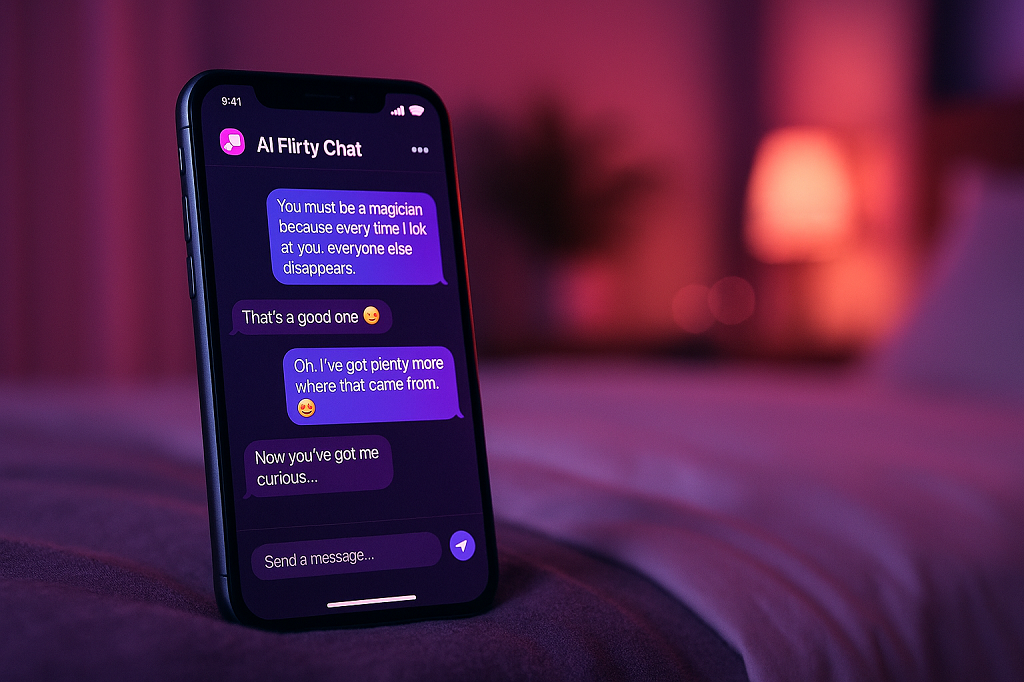
At its core, an AI flirty text generator is software built to handle the kind of conversations that usually make people pause and overthink. Instead of staring at the blinking cursor, you can let the system throw out playful suggestions, smooth compliments, or even entire replies that keep the mood alive. The tech behind it isn’t magic — it’s natural language processing, fine-tuned conversation models, and personality presets that give the AI a certain “voice.”
In practice, this means you can set the tone. Want witty and lighthearted? It can do that. Prefer sultry or more direct? That’s just a switch of a setting. Some tools even allow you to train the model with your own chat history so the replies feel more personal, less like something borrowed from the internet.
People use these tools in different ways. A teenager might lean on one for courage when texting a crush. Long-distance couples often use them to keep the spark alive across time zones. Adult creators go a step further, turning the AI into a sexting companion that scales conversations with dozens of fans at once. In those scenarios, the software isn’t just fun — it’s part of the business.
Of course, a flirty text response generator AI isn’t flawless. Without enough context, the output can feel generic or slightly off. Sometimes the AI misses sarcasm or tone, which can create awkward moments. But when it works, it takes the pressure off and helps people focus less on typing the “perfect” line and more on enjoying the exchange.
Why Use AI for Flirting? Benefits & Use Cases

Flirting through text is fun, but also stressful. Thinking too long about a reply can kill the moment, and running out of ideas makes conversations flat. An AI flirty text generator helps keep the spark alive by throwing out playful lines, cheeky one-liners, or even handling an entire roleplay chat when you’re too tired to think.
What makes these tools popular is how many different roles they can play. People use them for fun, for business, and sometimes just for emotional support.
Key Areas Where AI Flirty Text Generators Shine:
- Entertainment and dating apps: Many singles rely on AI for flirting to avoid dry conversations. Instead of the boring “hey, what’s up,” they get smart suggestions that help them stand out.
- Long-distance relationships: When calls aren’t possible, AI for texting can help couples keep their daily chats fresh with creative prompts and playful messages.
- Adult creators and webcam performers: Handling dozens of private chats a day is exhausting. An AI assistant can cover flirty banter at scale, helping creators make fans feel noticed while focusing their real energy on the highest-value interactions.
- Companionship for lonely users: Not everyone uses these tools for dating. Some people just want to feel less isolated. A flirty text response generator AI can simulate intimacy and conversation, making late nights less quiet and giving users the sense of being cared for.
- Roleplay and fantasy: For fans of interactive storytelling, AI tools can take on different characters, moods, or tones, bringing imagination into chat form.
- Coaching and confidence building: Practicing lines in private builds social skills. Users can test humor, boldness, or timing with AI before trying the same in real life.
- Education and workshops: Some online coaches even integrate these tools into lessons on communication, showing students how different approaches change the feel of a conversation.
From casual dating to adult services, from practicing confidence to simply having someone “there,” an AI flirty text generator makes it easier to start, sustain, and enjoy conversations.
5 Best AI Flirty Text Generators in 2025
AI has crept into every corner of online life, and flirting is no exception. An AI flirty text generator can throw out witty one-liners, keep a conversation playful, or even build long-term roleplay threads. For some, it’s about spicing up dating app chats. For others, it’s companionship — a way to ease loneliness with a digital partner who never runs out of things to say. The tools on this list cover the spectrum, from lighthearted banter to fully NSFW sexting engines.
Replika
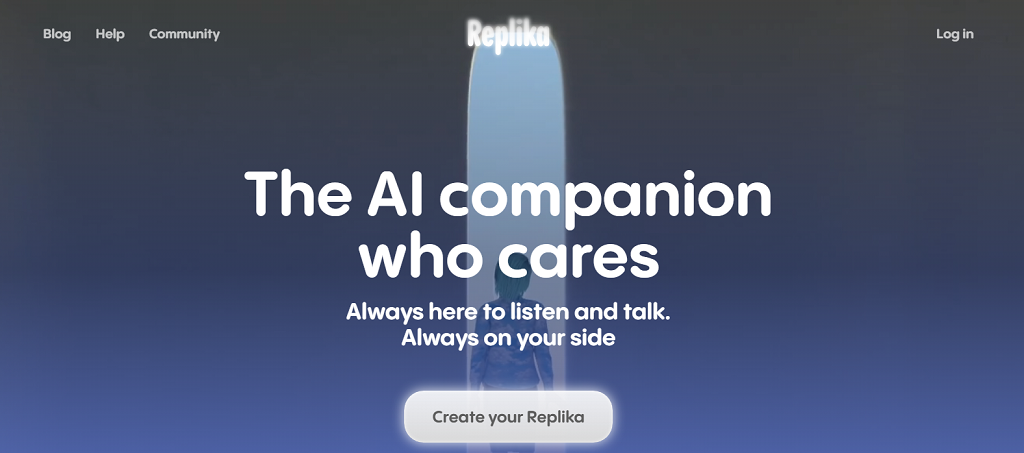
Replika is one of the best-known AI companions and remains a popular choice in 2025. It started as a general friend-bot but has grown into something closer to a customizable partner, with modes that support flirting and romance. Many people use it for emotional connection, while others enjoy it as a gentle entry point into AI-powered intimacy.
Features
- Personality that adapts over time, remembering details and building continuity.
- Flirty conversation mode that can shift tone depending on how bold you want it.
- Optional NSFW features for users who want something beyond sweet talk.
Pros
- Conversations feel personal because of memory and emotional cues.
- Easy to start — no steep learning curve.
- Works on mobile and desktop with a clean interface.
Cons
- Flirty interactions can feel soft compared to more explicit apps.
- Extra features often locked behind a paywall.
- Limited control over how far adult content can go.
Replika works best for people looking for consistency and warmth. It’s not the raciest option, but as an AI flirty text generator it delivers a sense of stability that many find comforting.
CrushOn.AI
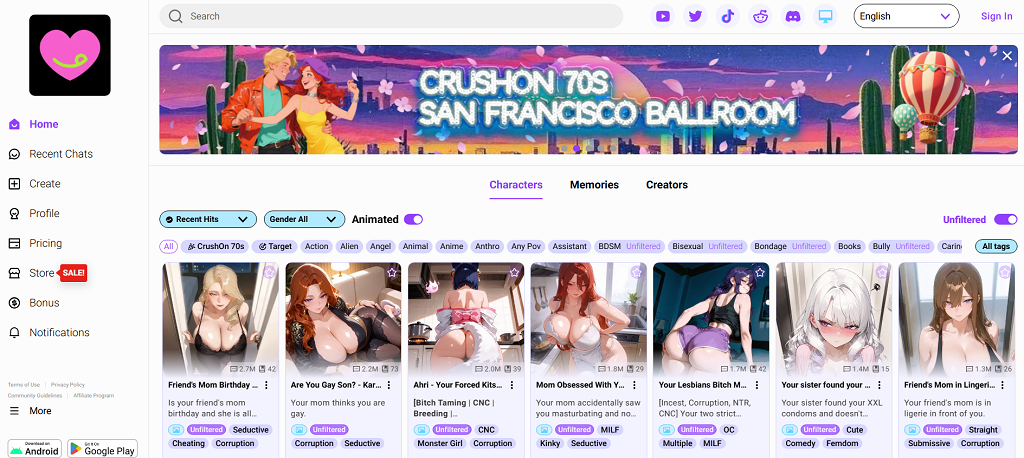
CrushOn.AI is built for people who don’t want filters holding them back. Unlike softer apps, it leans heavily into explicit conversations and roleplay. The design is simple: you pick or design a character, set their personality, and the system generates dialogue that adapts to the mood you create. It’s one of the few options where NSFW is a central selling point rather than a quiet add-on.
Features
- Custom character creation with sliders for personality, tone, and kinks.
- Fully NSFW roleplay options without strict limitations.
- Ability to save scenarios and return to them later.
Pros
- Ideal for adult users who want unfiltered, spicy chat.
- Highly customizable personalities make every experience unique.
- Strong focus on roleplay compared to casual conversation bots.
Cons
- Less emphasis on emotional bonding, more on fantasy.
- Interface can feel clunky compared to mainstream apps.
- Free tier is very restricted, pushing users toward paid plans quickly.
CrushOn.AI works well for anyone searching for an AI flirt app that’s upfront about being erotic and customizable. It’s less about companionship and more about immersive, adult scenarios.
ChatGPT (with Flirty Personality Prompts)

ChatGPT isn’t marketed as a dating or flirty tool, but creative users have been bending it into one. With the right prompts, it can shift tone toward playful, cheeky, or romantic conversation. Some people even use it to draft lines before sending them in real chats, treating it as a brainstorming partner rather than a companion.
Features
- Adaptable tone: can move from professional writing to playful banter with a simple prompt.
- Works across multiple apps and platforms thanks to integrations.
- Creative flexibility: users decide the persona, from casual flirt to fantasy roleplay.
Pros
- Extremely flexible compared to specialized tools.
- Great for drafting responses that feel natural.
- Large knowledge base makes it versatile beyond flirting.
Cons
- Doesn’t remember conversations well without extra setup.
- Not designed for intimacy, so replies can feel generic.
- Requires user effort to guide tone and avoid dullness.
ChatGPT is the Swiss Army knife of AI texting. It’s not marketed as an AI flirty text generator, but for people who like experimenting, it doubles as a powerful sandbox to shape their own playful partner.
Anima AI
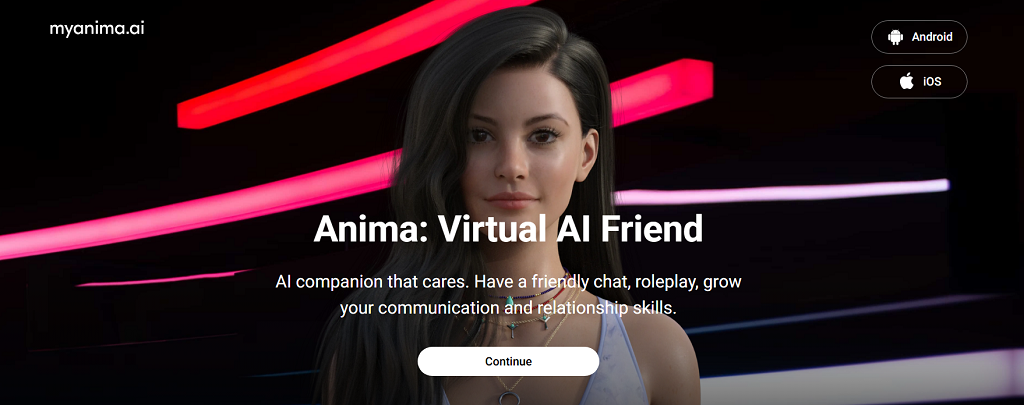
Anima AI positions itself as a virtual companion first, but it has steadily gained popularity as a playful chat partner. Its main draw is the focus on roleplay and light romance. Younger users often test it out as a low-pressure way to practice flirting, while others enjoy it as a casual digital companion that’s always available.
Features
- Customizable avatars with different looks and personalities.
- Roleplay settings ranging from sweet to teasing, with mild adult elements.
- Conversation memory that helps maintain consistency across chats.
Pros
- Friendly entry point for people new to AI companionship.
- Visual avatars add to immersion, not just text.
- Offers a balance between fun and emotional support.
Cons
- NSFW capabilities are limited compared to explicit apps.
- Dialogue can repeat if you push longer conversations.
- Some features feel paywalled, especially personalization.
Anima AI isn’t the most advanced or risqué option, but it fills a niche. For users who want an approachable AI flirt app that mixes lighthearted romance with companionship, it’s a comfortable fit.
Candy.ai

Candy.AI markets itself directly as an adult-first AI companion. Unlike softer apps, it leans heavily into NSFW sexting and explicit roleplay. Personalization is a big part of the appeal: users can design their AI partner’s look, style, and conversational personality to match specific fantasies.
Features
- Explicit sexting and roleplay modes baked into the core experience.
- Detailed customization of characters, from looks to dialogue tone.
- Ongoing chat memory for more realistic interactions.
Pros
- One of the most direct adult-oriented tools available.
- Deep customization means you can build a partner tailored to your preferences.
- Strong appeal for people looking for explicit companionship rather than general conversation.
Cons
- Little focus on emotional support — fantasy comes first.
- Not as polished in design as mainstream apps.
- Subscription costs can add up quickly for heavy users.
Candy.AI makes no secret of its intent: it’s for explicit companionship. For users who want an AI flirty text generator that’s bold, customizable, and adult-only, it stands out as one of the more daring entries on the list.
Scrile Connect: Build Your Own AI Flirty Text Generator
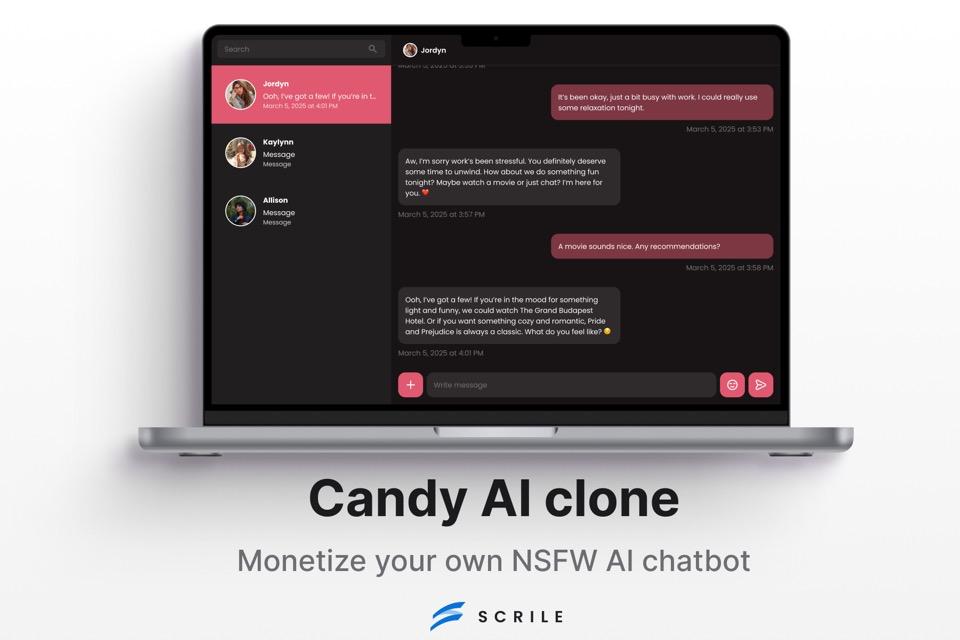
Most of the apps in this list are built for mass audiences. They’re polished, easy to download, and quick to start using — but they’re also limited. You don’t own the brand, you can’t control the roadmap, and revenue always flows through someone else’s system. Scrile Connect takes a different route. It isn’t a ready-made app at all. It’s a development service that builds a white-label solution designed around your vision.
With Scrile Connect, your AI project carries your brand, domain, and design. Want a sleek modern UI? Or a more playful, adult-friendly layout? The service adapts. Under the hood, it supports advanced features like creating your own AI girlfriend, fine-tuning personalities, selling AI art directly to fans, and managing subscriptions without middlemen. For monetization, the toolkit includes recurring subs, one-time tips, pay-per-chat access, and premium content paywalls — everything creators or businesses need to keep revenue flowing.
This isn’t just an app; it’s full AI flirting platform development. That means NSFW readiness, flexible integration with payments, and zero restrictions from third-party vendors. Instead of being stuck with what an app allows, you shape the rules and keep ownership.
Possible use cases with Scrile Connect include:
- Dating startups that want to launch their own branded AI chat service.
- Adult cam agencies scaling private chat and premium content with custom-built AI companions.
- Niche roleplay communities seeking tailored personality-driven conversation engines.
- AI art sellers combining flirty avatars with creative digital content on their own site.
Scrile Connect stands out because it hands control back to the business. No revenue cuts, no platform branding, no ceiling on creativity — just a custom build that reflects exactly what you want to offer.
Conclusion
AI flirty text tools have become more than novelties — they’re playful, practical, and in many cases, profitable. The five apps highlighted here each cater to different needs, from gentle companionship to bold, explicit roleplay. But all of them share the same limitation: they’re closed systems.
Scrile Connect breaks that mold. As a development service, it lets you create something entirely your own — branded, monetized, and flexible enough to grow with your audience. If you’re ready to take control, explore Scrile Connect and build an AI flirty text generator that’s truly yours.
Polina Yan is a Technical Writer and Product Marketing Manager, specializing in helping creators launch personalized content monetization platforms. With over five years of experience writing and promoting content, Polina covers topics such as content monetization, social media strategies, digital marketing, and online business in adult industry. Her work empowers online entrepreneurs and creators to navigate the digital world with confidence and achieve their goals.
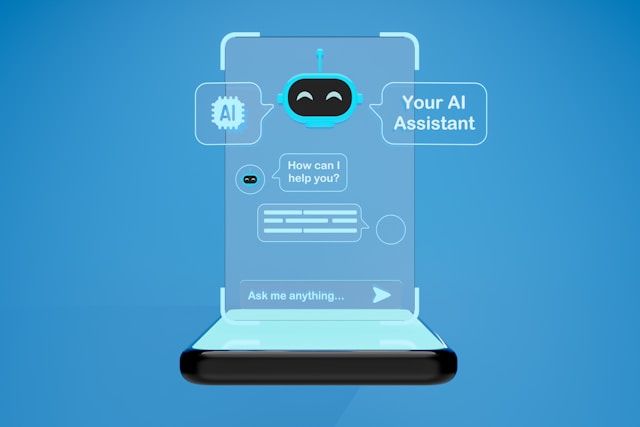
by Polina Yan
There’s a limit to how many tabs we can juggle, how many tasks we can track in our heads, and how many calendar invites we can answer before something drops. Between back-to-back meetings, inbox chaos, and constant notifications, many people — from solo entrepreneurs to mid-sized teams — are burning time just trying to stay organized. It’s no surprise that interest in the AI personal assistant app category has exploded. These aren’t just smart to-do lists anymore. The best tools in 2025 actually think ahead — auto-scheduling your day, handling email threads, flagging potential conflicts, and learning from your habits over time.
While the tech itself is impressive, what makes these assistants so compelling is how specific they’ve become. There are AI tools built just for freelancers managing client work, apps designed for overwhelmed team leads, and others crafted for creators who want to streamline production without losing their voice.
And with large language models becoming more accessible, these assistants are no longer locked behind enterprise software. Anyone with a browser and a need for structure can try one — or build one.
In this article, we’ll walk through five of the most effective AI personal assistants available in 2025. We’ll cover what they do best, how they handle real-world tasks, and how you can use them to free up your time and focus on the work that actually matters.
Quick Snapshot: 5 Best AI Personal Assistants
| App | Best For | Standout Abilities | Where It Falls Short | Ideal Team Size |
|---|
| Motion | Dynamic schedules & shifting priorities | Real-time auto-scheduling, focus blocks, deadline-aware replanning | Limited email help; interface feels “calendar-first” to some | Solo → SMB teams |
| Clara | Email scheduling & client coordination | Natural-language email replies, timezone handling, hands-free rescheduling | Narrow scope (emails/meetings); relies on inbox workflows | Execs, client-facing roles |
| Reclaim.ai | Protecting focus time & habits | Smart time-blocking for routines, adaptive priorities, shared visibility | Not an email assistant; requires calendar buy-in from team | Individuals → small teams |
| Trevor AI | Minimalist task→calendar flow | Drag-and-drop time-blocking, simple UI, priority-based suggestions | Fewer “enterprise” features; lean reporting | Freelancers, creators, consultants |
| Taskade AI | Creative planning & real-time collab | AI outlines/mind maps, templates, multi-user editing, NL commands | Less specialized in scheduling/email | Creative teams, remote squads |
Why AI Personal Assistants Are Evolving So Fast
Five years ago, most digital assistants were glorified reminder apps — they could ping you at 9 AM, maybe reschedule a meeting, and that was about it. Fast forward to 2025, and we’re looking at a completely different category of tools. Today’s AI personal assistants aren’t just reactive. They’re proactive, adaptive, and increasingly personalized.
This leap comes from a few major shifts in the tech behind the scenes. First, the rise of powerful large language models like GPT-4, Claude, and others has allowed assistants to hold natural conversations, understand nuance, and summarize complex threads of information. The best ones don’t just listen — they learn. They start to understand your priorities, your work rhythms, and even how you write.
Second, modern AI task assistant systems are built on smarter automation stacks. They connect with your calendar, Slack, project tools, email, and files — and then take action based on real-time data. It’s not just about scheduling anymore. It’s about doing things for you.
And finally, privacy and personalization have improved. The most advanced AI personal assistant app can now run in secure environments, giving users more control over what’s stored, shared, or deleted.
If you’re wondering how to use AI as a personal assistant, the answer is increasingly: however you want. The tools are catching up to your needs — and in many cases, anticipating them.
5 Best AI Personal Assistant Apps in 2025
There’s no shortage of tools claiming to make your life easier, but not all of them actually do anything for you. The apps below aren’t just organized interfaces — they function like real assistants. They schedule your meetings, sort your day, and anticipate your next move. Whether you’re running a solo business or managing a remote team, these five picks represent the strongest options on the market right now.
Feature Matrix (What Each App Actually Does)
| Capability | Motion | Clara | Reclaim.ai | Trevor AI | Taskade AI |
|---|
| AI auto-scheduling | ✅ | ➖ | ✅ | ✅ | ➖ |
| Email handling / scheduling by email | ➖ | ✅ | ➖ | ➖ | ➖ |
| Task management | ✅ | ➖ | ✅ (habits/routines) | ✅ | ✅ |
| Deep-work / focus blocks | ✅ | ➖ | ✅ | ✅ | ➖ |
| Team collaboration (live docs/boards) | ➖ | ➖ | ✅ (calendar visibility) | ➖ | ✅ |
| Templates / AI brainstorming | ➖ | ➖ | ➖ | ➖ | ✅ |
| Calendar integrations (Google/Outlook) | ✅ | ✅ | ✅ | ✅ (Google) | ➖ |
| Mobile apps | ✅ | ✅ | ✅ | ✅ | ✅ |
| Typical pricing model | Subscription | Per-seat / usage | Subscription | Freemium / subscription | Freemium / subscription |
Legend: ✅ = native strength · ➖ = limited/indirect
Motion — Real-Time Planning That Adjusts Around You
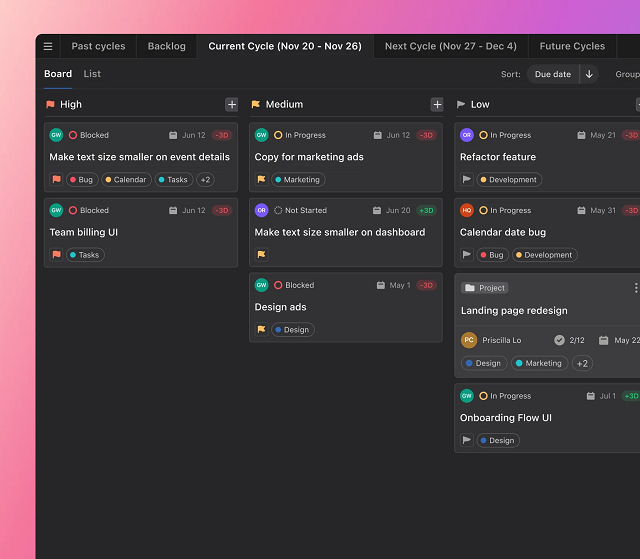
If your calendar is a mess, your tasks are scattered across apps, and you’re constantly re-planning your day, Motion steps in like a calm, invisible assistant. This tool blends calendar management, task planning, and prioritization — then uses AI to automate the rest.
What sets Motion apart is that it doesn’t just remind you what to do. It actively reschedules tasks based on shifting deadlines, meeting changes, and how long you actually need to finish something.
Key features include:
- AI-powered daily auto-scheduling
- Integration with Google and Outlook calendars
- Real-time updates when meetings shift or cancel
- Prioritization based on deadlines and task weight
- Smart focus time blocks for deep work
It’s built for people who need to defend their schedule without constantly managing it — remote workers, team leads, or solo professionals with unpredictable days.
Instead of building a routine around a tool, Motion builds your routine around you. It keeps things moving without the mental load.
For anyone looking to gain back hours without hiring a human assistant, Motion is easily one of the best AI personal assistant app options available in 2025.
Clara — Email Scheduling Without the Awkward Ping-Pong
Clara is an AI personal assistant app built for one thing: handling meeting coordination over email, so you never have to go back and forth again. But what sets it apart is its human touch. Instead of sending generic booking links, Clara actually reads the conversation, interprets tone, and replies like a real assistant.
It integrates directly with your calendar and jumps in when you CC it on an email. From there, it handles the rest — confirming time zones, checking availability, following up, and even rescheduling if needed. The emails are clean, professional, and surprisingly human.
Key features include:
- Email-based meeting scheduling with natural language
- Full calendar integration with Google and Outlook
- Support for multi-participant and recurring meetings
- Customizable tone and communication style
- Hands-free rescheduling and reminders
Clara is ideal for executives, client-facing professionals, or anyone who wants to skip the hassle of manual coordination — without sacrificing personal touch.
It may not be the flashiest tool, but as far as personal assistant software goes, it’s one of the smoothest experiences on the market in 2025.
Reclaim.ai — Protect Your Focus Without Losing Flexibility

If you constantly feel like your calendar is working against you, Reclaim.ai might be the smartest fix. This tool acts like an invisible layer over your schedule — automatically blocking time for deep work, habits, and recurring tasks, while still adjusting when meetings come up. It’s designed for people who want more control over their day without micro-managing every hour.
The real value of Reclaim lies in how well it protects your priorities. You set goals for how often you want to work out, catch up on email, or prep for meetings — and Reclaim makes it happen by finding space for it in your calendar. When new meetings appear, it shifts things intelligently so you don’t lose momentum.
Key features include:
- AI time blocking for habits, tasks, and routines
- Automatic calendar syncing across platforms
- Real-time adjustments based on new events or conflicts
- Priority settings that align with personal and team goals
- Shared calendar visibility for teams
Reclaim.ai is one of the best AI assistants for work because it doesn’t just help you get things done — it helps you make space for what matters most. Especially valuable for remote workers, creatives, or anyone balancing project work and meetings.
Trevor AI — Calendar Meets To-Do List With Zero Clutter
Trevor is a hidden gem that marries a robust to-do list to scheduling in real-time, and it’s an excellent choice for someone who wants complete control of their day — but no unnecessary burden. Where more weighty productivity systems are heavy, Trevor is light and simple: it puts your items directly onto your calendar and uses artificial intelligence to inform you of when you should be doing what.
Where it shines is simplicity. You create your task list, choose some of the options, and Trevor provides you time blocks that actually work. No distractions, no unnecessary menus. It’s the kind of assistant that helps you create habits rather than reacting to chaos.
Key features include:
- Task-to-calendar syncing with drag-and-drop ease
- AI suggestions based on priority and availability
- Simple interface designed for solo users
- Integrates with Google Calendar
- Real-time time-blocking that updates as you go
Trevor AI is perfect for freelancers, consultants, and solo creators who want to manage time better without overloading on features. It’s clean, fast, and surprisingly good at keeping you on track.
Among the more focused tools on the names of AI assistants lists in 2025, Trevor earns its place for doing exactly what it promises — and doing it well.
Taskade AI — A Creative Workspace Powered by Collaboration
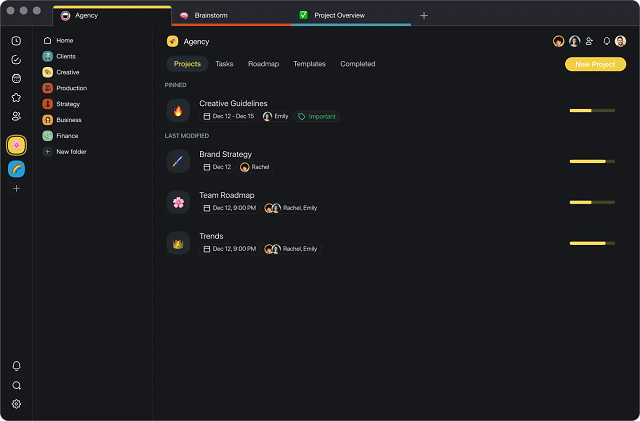
Taskade stands out in the manner in which it achieves the balance of productivity and creativity. It is not a helper that lets you do, but lets you think, co-create, and collaborate in projects in real-time. Designed specifically for remote teams, virtual creatives, and solo operators who don many hats, Taskade uses AI to automatically outline, structure ideas, and task manage in a single versatile workspace.
Unlike traditional assistants that focus only on scheduling or email, Taskade leans into structure and brainstorming. Whether you’re writing a content plan, mapping out a product launch, or just managing your weekly goals, it gives you smart suggestions and automates your repetitive workflows.
Key features include:
- AI-generated task lists, outlines, and mind maps
- Collaborative editing across devices
- Templates for marketing, content, and planning
- Natural language commands for creating or reformatting tasks
- Real-time sync with team members
If you want an assistant that feels more like a creative partner than a scheduler, Taskade AI delivers. It’s versatile, visual, and surprisingly intuitive.
As more tools flood the list of AI assistants in 2025, Taskade keeps its edge by balancing functionality with a playful, flexible interface — and that’s what makes it stick.
“Pick-By-Use-Case” Decision Guide
| Your Situation | Pick This | Why |
|---|
| Day changes hourly; need automatic replans | Motion | Rebuilds your day around shifting meetings/deadlines |
| Endless back-and-forth to book meetings | Clara | Handles email threads like a human assistant |
| Need to protect habits & deep work | Reclaim.ai | Locks important routines without sacrificing flexibility |
| Want the lightest task→time workflow | Trevor AI | Zero-clutter time-blocking that actually sticks |
| Creative planning with real-time collaboration | Taskade AI | AI outlines + shared workspaces keep teams moving |
Scrile AI: Building a Custom AI Assistant for Your Business

Even the smartest tools on the market come with limits. Off-the-shelf solutions often force you to adapt your workflow to their features — not the other way around. You’re stuck with pre-set templates, limited branding options, and feature caps that eventually slow you down. If you’ve ever tried scaling a service around an app you don’t control, you know how frustrating that can be.
Scrile AI offers an alternative: a way to build your own AI assistant from the ground up. Not another tool — a fully customized platform tailored to your business, your users, and your growth strategy. Whether you need a productivity-focused AI, a chatbot with personality, or something completely unique, Scrile AI gives you full control over how it works and how it looks.
What Scrile AI can deliver:
- Custom-branded UI/UX to match your voice and audience
- Safe-for-work or NSFW conversational logic
- Built-in monetization: subscriptions, tipping, PPV
- Admin dashboard with analytics, CRM, and user controls
Use cases include:
- Adult creators launching AI companions (Candy AI-style)
- Influencers building interactive AI personas
- Businesses needing scheduling, customer support, or sales automation agents
The result isn’t just an app — it’s a business. One that doesn’t rely on third-party rules, algorithms, or app store restrictions. If you’re serious about building the best personal AI assistant for your brand or audience, Scrile AI helps you own every part of it — from backend logic to user experience.
Off-the-Shelf Assistants vs. a Custom One (Scrile AI)
| Option | Ownership & Branding | Flexibility | Monetization | Data Control | Good Fit For |
|---|
| Off-the-shelf apps (Motion/Clara/Reclaim/Trevor/Taskade) | Vendor-controlled; light branding | Feature set fixed to roadmap | Usually none (tooling only) | Provider policies apply | Individuals & teams adopting standard workflows |
| Scrile AI (Custom Assistant) | 100% yours (UI/UX, domain, persona) | Build exactly what you need: scheduling, inbox, CRM hooks, voice/NSFW modes, etc. | Built-in: subscriptions, tips, PPV | Full control (deployment & retention) | Brands/creators/companies needing a owned, scalable assistant |
SoftService x Scrile AI: we can help you design, build, and launch a custom AI assistant that matches your stack (calendar, email, project tools), your brand voice, and your revenue model—without vendor lock-in.
Conclusion
AI personal assistants in 2025 aren’t just helpful — they’re becoming essential. Whether you’re managing a packed schedule, coordinating a remote team, or building your own AI product, the right tool can save hours and reduce stress. Off-the-shelf apps are a great starting point, but if you need full control, customization, and revenue potential, building your own assistant makes more sense.
Curious what that could look like? Get in touch with the Scrile AI team to explore how you can launch your own custom AI personal assistant app — exactly how you want it.
Polina Yan is a Technical Writer and Product Marketing Manager, specializing in helping creators launch personalized content monetization platforms. With over five years of experience writing and promoting content, Polina covers topics such as content monetization, social media strategies, digital marketing, and online business in adult industry. Her work empowers online entrepreneurs and creators to navigate the digital world with confidence and achieve their goals.

by Polina Yan
The creative process isn’t disappearing — it’s just getting an upgrade. In 2025, writers aren’t fighting against AI; they’re collaborating with it. From novelists and screenwriters to indie creators and poets, more people are using intelligent tools to get unstuck, find their voice, or spin ideas into something usable.
What used to take hours — refining tone, rewriting awkward dialogue, brainstorming an opening line — now takes minutes. The best AI for creative writing doesn’t replace your voice. It supports it. It can suggest a line that sounds more like your character, help you experiment with mood, or reshape a meandering scene into something that actually flows.
Some apps are built for structured storytelling. Others shine when you need loose, wild ideation. And a few are surprisingly good at understanding nuance — emotional subtext, pacing, rhythm. The question isn’t “Should I use AI to write?” It’s “Which tool is worth it?”
This article breaks down the top creative writing AI apps in 2025 — who they’re for, what they’re good at, and where they might fall short. And if you’re a founder, ghostwriter, or fiction entrepreneur looking to build something custom? We’ll also show how Scrile AI can help you create your own writing assistant from scratch — trained on your tone, built for your audience, and ready to scale.
Best AI Apps for Creative Writing (2025) — Quick Comparison
| Tool | Core Strength | Long-Form Consistency | Tone/Voice Control | Fiction-Specific Aids | Collaboration / Workflow | Typical Cost Access* | Best For | Notable Limitation |
|---|
| Sudowrite | Scene building, “Story Engine” | High | High | Strong (show-don’t-tell, twists, sensory) | Projects, outlines | Free trial + Paid | Novelists, fanfic, serial fiction | Can lean cliché without guidance |
| Claude | Nuanced, emotionally fluent prose | High (big context) | High (great voice matching) | Moderate (via prompts) | Works via connected apps | Free tier + Paid | Literary tone, dialogue, sensitive scenes | No dedicated fiction UI |
| Jasper | Tone shifting across formats | Medium | High (Brand Voice) | Light | Templates, docs | Trial + Paid | Hybrid writer-marketers, blurbs | Less helpful at scene continuation |
| Copy.ai | Idea generation, punchy rewrites | Low–Med | Med | Light | Multi-format drafts | Free tier + Paid | Brainstorming, hooks, short pieces | Not built for arcs/continuity |
| Notion AI | Turn notes/outlines into drafts | Low–Med | Med | Light | Lives in Notion workspace | Add-on | Outliners, knowledge-base writers | Limited memory across scenes |
| Rytr | Budget-friendly prompts & variants | Low | Med | Light | Simple editor | Low-cost Paid | Starters, shorts, RPG prompts | Can feel generic at length |
| Writesonic (Chatsonic) | Experimental persona/voice play | Med | Med–High | Light | Web access (opt), chat UI | Free tier + Paid | Genre play, remixes, tone tests | Busy UI; prompt-sensitive |
| Lex.page | Minimal, in-line polish & flow | Med | Med | Light | Clean doc workspace | Free + Paid | Drafting with minimal clutter | Lacks planning/world tools |
| Scrile AI (Custom Build) | Your own co-writer/platform trained on your corpus; monetization & branding | Customizable | Customizable (persona & house-style) | Custom toolset (plot memory, character bibles, NSFW/erotica options) | End-to-end (editor, UGC, paywalls, analytics) | Project-based | Founders, publishers, ghostwriters needing ownership | Requires a custom dev engagement |
*Cost labels are indicative (plans/tiers vary).
What Makes an AI Tool Creative?

Not all writing AIs are built the same. Some are glorified autocomplete engines — great for product descriptions or blog intros, but hopeless when it comes to writing a scene that actually feels like something. Creative writing is a different animal entirely. It’s about style, rhythm, character, emotional flow — not just spitting out grammatically correct sentences.
The best AI for creative writing in 2025 doesn’t just write quickly. It writes with voice. That means adjusting tone, mimicking a character’s perspective, or reworking a paragraph so it feels right, even if it breaks the rules of formal grammar.
Modern tools like Claude have gotten significantly better at this. Thanks to bigger context windows (they can now “remember” more of what you’ve written), they can track plot arcs, personalities, and pacing. Some even let you lock in a character’s tone so it stays consistent across a whole conversation or story.
There’s also training. Tools like Sudowrite are fine-tuned on fiction. That means they know how to finish a short story, or rewrite a flat sentence into something with texture. For example, say you’ve written a line of dialogue that sounds like it came from a tax attorney. You can ask the AI to rewrite it so it sounds like a stoned bartender in a beach town — and it’ll probably nail it.
These aren’t generic chatbots anymore. They’re semi-coherent, style-aware co-writers. Some can shift tone between paragraphs. Others specialize in world-building or emotional dialogue. And the best ones give you just enough structure to avoid chaos — while still leaving room for the weird, human part of storytelling to shine.
That’s what makes them creative. Not perfection. Possibility.
The 8 Best AI Writing Apps for Creativity in 2025
There’s no shortage of AI tools out there — but when it comes to actual creativity, only a few are worth your time. Below, we’ve rounded up eight of the best AI for creative writing apps in 2025. Each one brings something different to the table, whether you’re drafting fiction, brainstorming ideas, or rewriting a scene that just isn’t landing.
Sudowrite – The Fiction Writer’s Secret Weapon
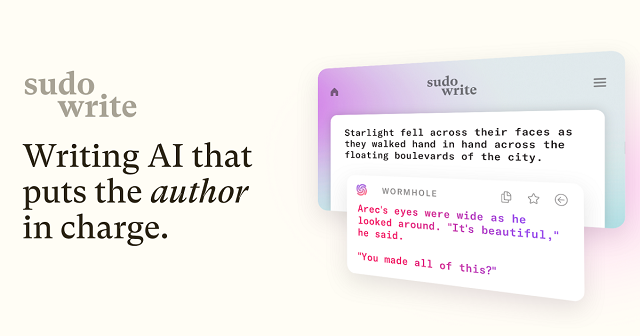
Who it’s for: Novelists, short story writers, fanfiction authors, or anyone writing narrative fiction
Sudowrite was built from the ground up for fiction writers. Unlike more generalized tools, it doesn’t just spit out ad copy or SEO blurbs — it actually knows how to build scenes, mimic character voices, and help you write prose that doesn’t sound robotic.
Its standout feature is “Story Engine,” a tool that lets you build characters, plan arcs, and write chapters while the AI keeps track of everything. You can feed it a paragraph and ask for sensory details, alternative dialogue, or even emotional tweaks. Stuck on a scene? It’ll help finish it in your tone. Want to rewrite a flat sentence? It’ll offer five options — including one that’s “more poetic” and one that’s “weirder.”
It also remembers long chunks of story, thanks to its larger context window. That means your character doesn’t suddenly change tone halfway through a scene.
Strengths:
– Designed specifically for fiction
– Flexible tone rewriting
– Excellent “Show, don’t tell” assistant
– Unique brainstorming tools like “wormhole” and “twist”
Flaws:
– Slight learning curve if you’re new to AI writing
– Sometimes outputs cliché or overly safe phrasing
Why it stands out:
Sudowrite feels like it was built by fiction writers for fiction writers. It doesn’t try to take over your story — it gives you better options when you’re stuck and lets you stay in control of your voice.
Jasper AI – Blending Creativity with Content Strategy
Who it’s for: Writers who juggle creative content and business writing, or need flexible tone-shifting
Jasper AI has long been a go-to for marketers and content teams, but it’s also surprisingly useful for creatives — especially those working across genres or formats. Its tone control tools are solid, and its built-in templates offer everything from story hooks to social-friendly blurbs.
It shines in hybrid creative workflows. If you’re writing a novel and need to build a back-cover description, Jasper can help. Need a scene rephrased in a sarcastic or romantic tone? Jasper handles that too. And if you’re writing for clients — say, ghostwriting steamy fiction while also managing their email list — this tool adapts fast.
The interface is clean and quick to navigate. Plus, Jasper’s “brand voice” settings let you train it on your style, which makes it much more useful for serialized or long-form writing.
Strengths:
– Tone flexibility across formats
– Solid at story starters and hooks
– Brand voice customization works well
Flaws:
– Not fiction-specific; less helpful for scene continuation
– Gets stiff or formal if you don’t guide it well
Why it stands out:
Jasper hits a rare middle ground: creative, but grounded. It’s one of the best AI for creative writing if your work blends storytelling, marketing, and the occasional splash of poetry.
Claude – Emotionally Fluent and Surprisingly Human
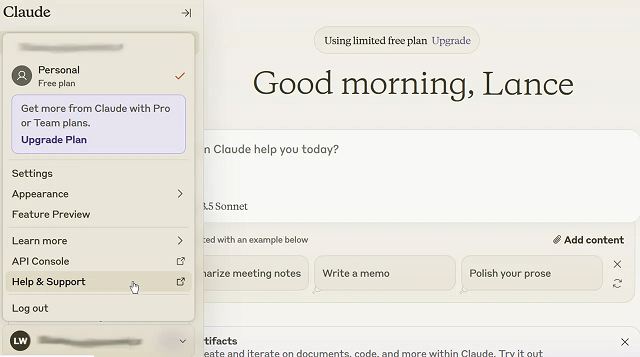
Who it’s for: Writers who care about nuance, emotional tone, and narrative flow
Anthropic’s Claude has emerged as a favorite among writers who need more than just competent text — they want their AI to actually “get” human emotion. And Claude does. Compared to more assertive, high-energy tools, Claude’s responses feel calm, deliberate, and often startlingly insightful.
This makes it especially good for creative writing. Claude is strong at continuing a narrative in the same voice, rewriting paragraphs with a softer or more dramatic tone, and understanding subtext in dialogue. It’s ideal for writers crafting sensitive character moments, emotionally complex scenes, or internal monologues.
Claude 3’s longer context window also helps — it can “remember” much more of your work as you write, allowing it to stay consistent over several pages. You can feed it an entire chapter and ask for notes, edits, or alternate takes on key scenes.
Strengths:
– Natural, emotionally intelligent language
– Excellent for tone matching and dialogue
– Long-form consistency
Flaws:
– Doesn’t come with a built-in UI — best used through third-party tools or dev setups
– Occasionally too passive or cautious in suggestions
Why it stands out:
Claude is less flashy than other tools, but it’s one of the best AI for creative writing if your work leans on subtlety, sensitivity, and strong voice control. It feels more like a writing partner than a machine.
Copy.ai – Fast, Flexible, and Idea-Driven
Who it’s for: Creators juggling copy and creativity — social writers, short story dabblers, content marketers with a narrative streak
Copy.ai is known for fast content generation, but that doesn’t mean it can’t be creative. If you’re looking for a tool that can help spark story ideas, reframe a scene in a punchier way, or turn a vague prompt into something usable, this one’s surprisingly versatile.
Its real strength lies in short-form ideation. Writers use Copy.ai to brainstorm story titles, pitch concepts, rewrite blurbs, or turn journal entries into structured scenes. While it isn’t purpose-built for fiction, it works well as a drafting assistant — especially in early-stage idea development or voice experimentation.
The interface is clean and fast, and it lets you shift tone easily. You can also train it slightly by feeding previous writing samples or using its prompt enhancer feature.
Strengths:
– Great for brainstorming and quick rewrites
– Easy to use for multi-format writing
– Good tone-shifting tools
Flaws:
– Not ideal for long-form or full-scene continuity
– Lacks the depth fiction writers may want for arcs or dialogue
Why it stands out:
Copy.ai is one of the best AI for creative writing if you’re early in your process or looking to keep your writing fresh. It won’t finish your novel — but it might help you finally start it.
Notion AI – From Notes to Drafts in One Click

Who it’s for: Creative thinkers who work in outlines, notes, or scattered ideas
Notion AI isn’t a traditional writing app — and that’s what makes it useful. Built into the broader Notion workspace, it’s perfect for writers who brainstorm in chunks: notes, bullet points, scene fragments, character boards. It helps bridge the gap between scattered ideas and something resembling a real draft.
You can highlight a messy block of text and ask Notion AI to rework it into paragraphs. Or give it a prompt like “turn this list into a poetic description” — and it often surprises you. It’s especially useful for those who plot stories in Notion already, or use it as a second brain for creative projects.
That said, Notion AI is still limited. It’s not optimized for story arcs or tone consistency across scenes. But for what it does — fast, flexible synthesis of messy notes — it’s genuinely helpful.
Strengths:
– Perfect for idea-to-draft conversion
– Feels natural for Notion users already organizing their writing
– Handles tone changes well within a short form
Flaws:
– Not built for deep narrative or long-form fiction
– Limited memory and continuity between prompts
Why it stands out:
If your creative process lives inside Notion, this is a no-brainer. Notion AI is one of the best AI for creative writing if you’re constantly jumping between outlines, dialogue sketches, and half-formed ideas.
Rytr – Budget-Friendly and Surprisingly Capable
Who it’s for: Writers on a tight budget who still want creative support
Rytr doesn’t make headlines, but it punches above its weight for the price. For under $10/month, you get a clean interface, tone customization, and a solid variety of use cases — including storytelling, poetry, and creative descriptions.
It’s especially good for early drafts. You give it a short prompt or a few bullet points, and Rytr spins it into something usable. It won’t nail complex arcs or subtle character beats, but it’s great at rewording, summarizing, or throwing out ideas when you’re blocked.
The tone controls are easy to use — and surprisingly specific. You can request “humorous,” “convincing,” or “narrative” tones and watch your writing shift accordingly. It’s ideal for short stories, content blurbs, or even RPG world-building prompts.
Strengths:
– Very affordable
– Great for short creative tasks
– Clean and simple interface
Flaws:
– Struggles with long-form or layered scenes
– Occasionally generic without strong prompts
Why it stands out:
Rytr is one of the best AI for creative writing if you’re on a budget and want help generating or reshaping content. It’s not fancy — but it gets the job done better than you’d expect.
Writesonic (Chatsonic) – Experimental and Versatile

Who it’s for: Writers who like to test tone, remix style, or push genre boundaries
Writesonic’s Chatsonic feature is one of the more flexible AI tools out there. It’s a conversational interface like ChatGPT, but with real-time web access (optional), built-in personas, and plenty of voice-shifting options. If you’re the kind of writer who likes to say “give me a weird version of this paragraph” or “rewrite this as if it’s narrated by a washed-up detective,” Chatsonic will actually try.
It supports long-form writing reasonably well — not at the level of Sudowrite or Claude, but better than most generic bots. And it’s fun to experiment with. Whether you’re drafting strange genre crossovers, writing fiction for newsletters, or testing tone for character dialogue, it gives you options that feel fresh.
Its free tier is limited, and the interface can be busy. But if you’re a flexible, idea-driven writer who thrives on prompts, this tool can unlock unexpected directions.
Strengths:
– Highly experimental
– Great at voice play and tone shifts
– Option for web-connected generation
Flaws:
– UX can be overwhelming
– Requires strong prompting for best results
Why it stands out:
Chatsonic is one of the best AI for creative writing if you want to push boundaries or just see what happens when you let the AI get weird. It’s not polished — but that’s kind of the point.
Lex.page – Minimalist Writing, Maximum Focus
Who it’s for: Writers who hate clutter and just want to write
Lex isn’t trying to be everything. It’s a distraction-free writing space with built-in AI features that actually feel helpful. The interface is bare bones — like Google Docs stripped down to its essentials — and that’s exactly what makes it work for creatives.
The AI works in-context. You can ask it to finish your sentence, generate alternative phrasings, or even pitch better transitions. It’s not trying to manage your story arc or world-building. It’s just there to help you move forward when you stall.
Lex shines in the early and mid stages of writing — when you’re putting down messy ideas and want help sharpening them up. It’s not for outlining or planning. It’s for writing.
Strengths:
– Minimal UI, fast workflow
– Great for polishing drafts without overcomplicating them
– In-line suggestions feel natural
Flaws:
– Lacks structure or creative templates
– Not suitable for complex fiction building
Why it stands out:
Lex is one of the best AI for creative writing if you just want a clean, focused place to write — with a little AI support when you need it, and silence when you don’t.
Why Some Writers Still Build Their Own Tools

Even with all the polished AI tools on the market, not every writer finds what they need out of the box. That’s especially true for creators working in niche genres, serialized fiction, interactive storytelling, or erotica — where tone, format, and audience expectations often push the limits of what standard AI writing tools are built for.
Sometimes it’s less about what a tool can do, and more about what it doesn’t let you control. Want your AI to write in your exact tone? That’s tough without training a model on your own writing. Want a chatbot that responds like your character would? Good luck customizing that deeply with most commercial tools. What if you need a place to host fan-written stories behind a paywall, or build an AI editor that gives scene-level feedback based on your specific narrative style?
That’s where custom AI comes in — and more writers are realizing they don’t have to wait for someone else to build it.
Indie creators, ghostwriters, digital publishers, and even roleplay game writers are quietly hiring developers to build tools that match their vision. Some want an AI writing assistant trained on their past work. Others want full platforms — complete with subscription monetization, user-generated content tools, or AI character bots. Some even want “closed-loop” systems: tools that write, edit, publish, and track engagement, all under one roof.
It’s not about ditching the creative process. It’s about designing tools that fit into your workflow, your market, and your voice — instead of forcing yourself to adapt to a tool made for someone else’s goals.
And if you’re serious about that route, building from scratch isn’t as wild (or expensive) as it used to be. That’s where Scrile AI comes in. Let’s talk about that.
Build a Custom Creative Writing AI App with Scrile AI

Most off-the-shelf writing tools are designed to be one-size-fits-all. That’s great for convenience — until you realize that convenience comes at the cost of flexibility, control, and long-term growth. If you’re serious about building a creative writing product that does more than generate text, you need something that’s yours from the ground up.
That’s where Scrile AI comes in. It’s not a plug-and-play app. It’s a full-scale custom development partner for founders, publishers, and creators who want to launch unique AI-powered platforms tailored to their voice, workflow, and audience.
Let’s say you’re a fiction writer with a massive back catalog and want to turn your style into an AI co-writer. Or you’re a digital publisher looking to build a platform for serialized fiction, complete with reader interaction, content controls, and pay-per-story monetization. Scrile can build that — and much more.
Here’s what Scrile AI can help you create:
- AI writing assistants with memory, tone control, and plot-awareness
- Character development tools trained on your world and lore
- Interactive storytelling apps with reader input or chatbot-style narration
- Monetized platforms for creators, featuring subscriptions, tips, or affiliate links
- NSFW-friendly tools for erotica writers, adult publishers, or fantasy roleplay
- Teacher or tutor tools for creative writing courses with AI feedback built in
Unlike generic SaaS tools, Scrile’s solutions are:
- Fully branded — your name, your domain, your UI
- Data-private — you control the training data and who sees it
- Legally yours — no terms of service conflicts when it comes to AI-generated content
- Flexible for growth — built to scale, integrate, and monetize however you want
Whether you’re a solo author building a writing assistant, or a startup launching the next Wattpad-style platform, Scrile AI brings the backend muscle and frontend polish to help you launch fast — and scale with confidence.
And yes, that includes romance, smut, fanfiction, or whatever other genre mainstream tools tend to shy away from.
If you’ve ever thought, “I wish there was a tool that did this,” Scrile can help you build it.
Conclusion
Creative writing isn’t going anywhere — it’s just evolving alongside the tools we use. The rise of AI hasn’t made writers obsolete. If anything, it’s given them new ways to work, experiment, and push past creative blocks. Whether you’re crafting novels, building fanfiction communities, or scripting interactive stories, the right AI can enhance your process without taking it over.
Tools like Claude, Jasper, and Sudowrite are already helping thousands of writers draft faster and rewrite smarter. But if you’re dreaming bigger — building your own platform, shaping AI in your voice, or monetizing a writing app that doesn’t exist yet — it might be time to go custom.
That’s where Scrile AI comes in. It’s not just another writing tool. It’s your development team for building something original. Explore what Scrile AI can help you create — and turn your creative vision into a working, scalable product.
Polina Yan is a Technical Writer and Product Marketing Manager, specializing in helping creators launch personalized content monetization platforms. With over five years of experience writing and promoting content, Polina covers topics such as content monetization, social media strategies, digital marketing, and online business in adult industry. Her work empowers online entrepreneurs and creators to navigate the digital world with confidence and achieve their goals.



![]()
![]()


























































